
Making Cobblestone Cabochons
- Category: Stones
- Technique(s): General Education
- Skill Level: Beginner
If you are like me, you have a TON of beads. I love the little square beads, but what can you do with them besides stringing them in some manner. SOLUTION! A little bit of glue and UV resin and you will have one-of-a-kind cabochons!
Materials

4mm x 4mm square beads
- Lesson Quantity: 12.00 pieces
- Purchase Quantity: 12.00 each
Tools

UV Resin
- Lesson Quantity: 1.00 pieces
- Purchase Quantity: 1.00 each

Foredom Foot Control for 115 Volt Series SR Motors
G22-C.FCT-1
- G22-C.FCT-1
- Lesson Quantity: 1.00 pieces
- Purchase Quantity: 1.00 each
- Price: $44.44
- Gold Club Price: $33.33

Unmounted Silicone Polisher, Square-Edge, White, Coarse Grit, 12 Pack
POL-300.10
- POL-300.10
- Lesson Quantity: 1.00 pieces
- Purchase Quantity: 1.00 each
- Price: $6.97
- Gold Club Price: $5.23
Instructions
Step 1
Read through the directions before starting the project.
Collect and divide 4x4mm beads into colorways.
Even random broken rectangle beads can be used-or break a few in half if they are the color needed.
Collect and divide 4x4mm beads into colorways.
Even random broken rectangle beads can be used-or break a few in half if they are the color needed.
Select the beads to be used in the cabochon.
If several cabochons and/or sets are made at once, an easy way to work with them is to place each set of beads on quarter sections of index cards.
Place the beads so the side facing up will be the side seen in the finished cabochon.
If several cabochons and/or sets are made at once, an easy way to work with them is to place each set of beads on quarter sections of index cards.
Place the beads so the side facing up will be the side seen in the finished cabochon.


Step 2
To assemble the cabochons, work with one set of beads at a time.
Place a small amount of e-6000 glue on a scrap piece of paper.
Separate the beads into rows.
Use a toothpick to place a small amount of glue between each the beads in each row.
Try not to use so much glue that it squishes out the top, but still enough to hold the beads together.
If this happens, leave it alone.
It can be more easily removed when dry than when still tacky.
Place a small amount of e-6000 glue on a scrap piece of paper.
Separate the beads into rows.
Use a toothpick to place a small amount of glue between each the beads in each row.
Try not to use so much glue that it squishes out the top, but still enough to hold the beads together.
If this happens, leave it alone.
It can be more easily removed when dry than when still tacky.
Place glue between each row and gently push the rows together.
Notice the glue squishing out between a few of the beads.
It can be pulled off after the resin backing is applied and the glue completely set in a day or two.
Line all the beads up as deired, trying to keep the cabochon a square as possible.
These beads are not calibrated, so are not all exactly the same size.
Do not worry about that, but push the beads tightly together, squaring up the pieces as much as possible.
Notice the glue squishing out between a few of the beads.
It can be pulled off after the resin backing is applied and the glue completely set in a day or two.
Line all the beads up as deired, trying to keep the cabochon a square as possible.
These beads are not calibrated, so are not all exactly the same size.
Do not worry about that, but push the beads tightly together, squaring up the pieces as much as possible.
Since all the beads are likely not the same thickness as in the photo on the left, it is necessary to make the tops of the cabochon beads flush with each other.
Place the cabochon right side down onto a stiff surface, here an index card, and push all beads down so the top of each bead is flush with the table surface.
Carefully check both sides of the cabochon, realigning the beads and pushing them together as needed.
Finally place it top down on the card.
Let the glue set at least overnight, 2 days is better, before the next step.
Hint: Carefully move the cabochon around a bit to make sure it does not become glued to the card.
Notice the hole in the pink bead on the right? This was a third hole in the bead, so it would not have been usable in most bead projects.
Perfect for the cab because the extra hole is on the bottom!
Place the cabochon right side down onto a stiff surface, here an index card, and push all beads down so the top of each bead is flush with the table surface.
Carefully check both sides of the cabochon, realigning the beads and pushing them together as needed.
Finally place it top down on the card.
Let the glue set at least overnight, 2 days is better, before the next step.
Hint: Carefully move the cabochon around a bit to make sure it does not become glued to the card.
Notice the hole in the pink bead on the right? This was a third hole in the bead, so it would not have been usable in most bead projects.
Perfect for the cab because the extra hole is on the bottom!




Step 3
To help stabilize the cabochon further, place a drop of UV resin on the back of each cab.
Spread it around with a toothpick to fill in the crevices.
If there are large gaps between the beads the resin will flow between them, which is undesireable.
Use several very thin layers of UV resin in this case.
Spread it around with a toothpick to fill in the crevices.
If there are large gaps between the beads the resin will flow between them, which is undesireable.
Use several very thin layers of UV resin in this case.


Step 4
Transfer the card with the cabochons to a UV light source, or set in the sun.
The UV resin will cure within 10 minutes or so as it is so thin.
After removal from the light source, if any resin ran between the beads to the front of the cabochon, use baby wipes or an alcohol soaked pad to remove it before it has a chance to set (light could not penetrate the beads, so the resin did not cure on the front of the cab.).
The UV resin will cure within 10 minutes or so as it is so thin.
After removal from the light source, if any resin ran between the beads to the front of the cabochon, use baby wipes or an alcohol soaked pad to remove it before it has a chance to set (light could not penetrate the beads, so the resin did not cure on the front of the cab.).

Step 5
It is time to square up the edges of the cabochon.
Dust and small bead shards will be flying everywhere so it is IMPERATIVE that safety glasses and a dust mask be worn during this process.
If needed, mark the cabochon OUTSIDE the finished size.
Use a soft lead pencil to draw the desired size/shape of the finished cobblestone cabochon.
Do not use a permanent marker on the stones.
It was only used here so the lines would show up in photos.
Permanent marker may be impossible to remove, even with alcohol.
Dust and small bead shards will be flying everywhere so it is IMPERATIVE that safety glasses and a dust mask be worn during this process.
If needed, mark the cabochon OUTSIDE the finished size.
Use a soft lead pencil to draw the desired size/shape of the finished cobblestone cabochon.
Do not use a permanent marker on the stones.
It was only used here so the lines would show up in photos.
Permanent marker may be impossible to remove, even with alcohol.
The three cabochons on the bottom have been ground down as far as needed.
The upper six have yet to be finished.
This photo gives an idea of all the ways that square edged beads can be connected to make cabochons.
The upper six have yet to be finished.
This photo gives an idea of all the ways that square edged beads can be connected to make cabochons.



Step 6
Use a coarse square edge polishing wheel to grind the edge of the cabochon down to the desired size. Hint: This process produces a lot of dust, so do the grinding in the garage or outdoors on a calm day to avoid having to clean up indoors.
Use a muslin buffing wheel to shine the beads back up.
Use a muslin buffing wheel to shine the beads back up.
Pro Tip: When I come up with an idea on how to use gemstones, designs just seem to keep popping up in my brain. I number each design, then place a piece of painters tape on the back of each cab with a corresponding number. Since I tend to work in "batches" I like to keep all the supplies, also numbered, for each design separated in trays. I make all the bezels, then cut the all the backplates before soldering again. It is like assembly line construction, only each jewelry piece is usually different. Carol Erickson, my proof reader, read on a jewelry blog about using ice cube trays to keep components separated. Great idea!










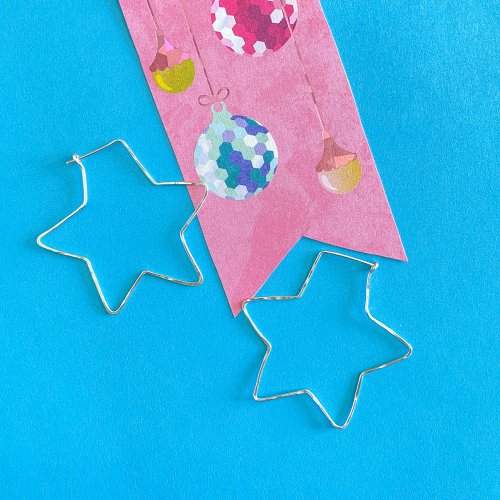
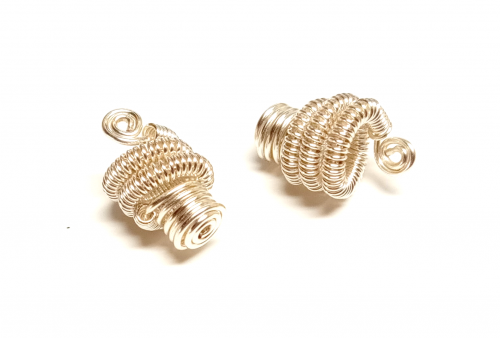
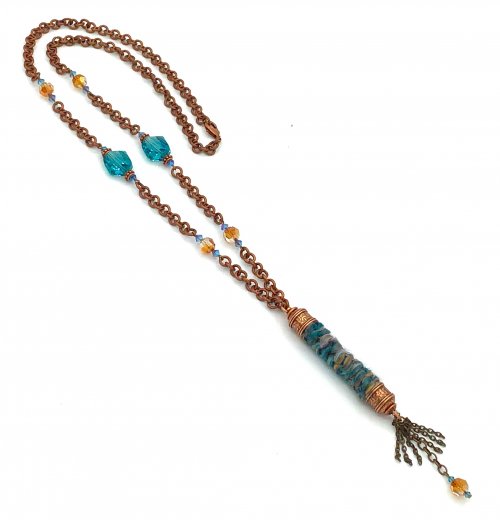

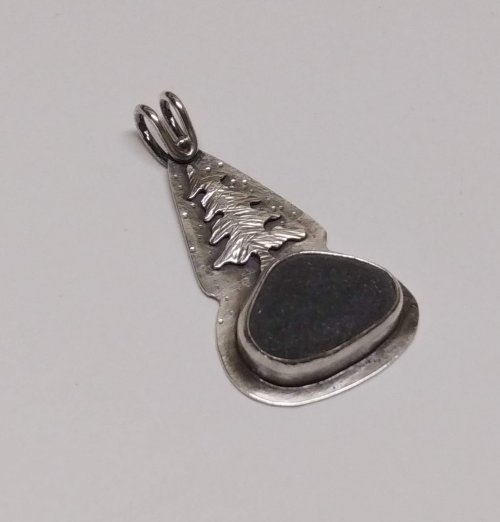
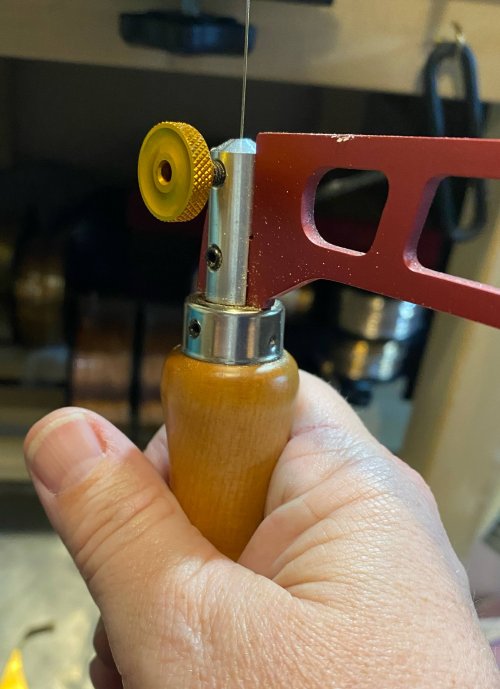
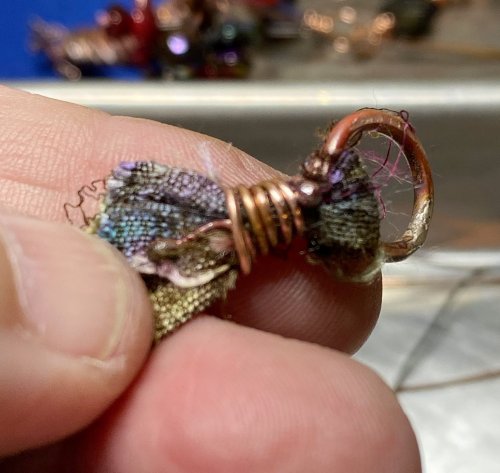
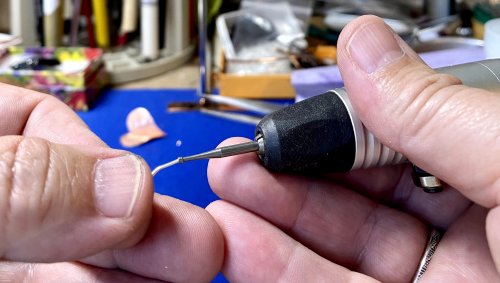
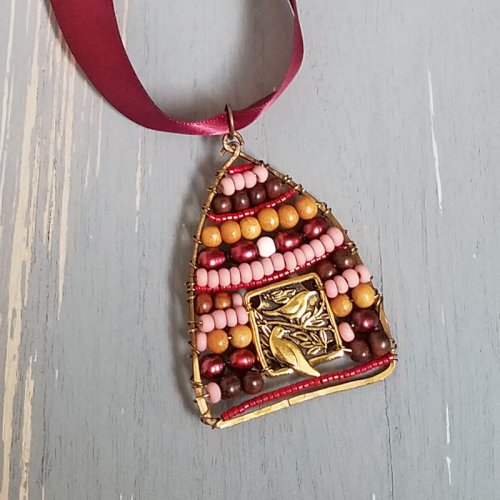
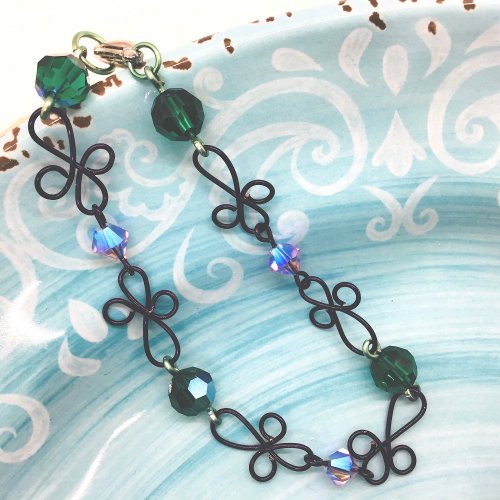

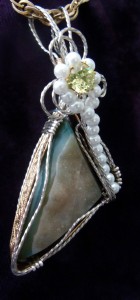

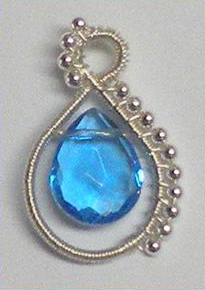 Beaded Briolette Pendant
Beaded Briolette Pendant
 Snail Trail Spiral Earrings
Snail Trail Spiral Earrings
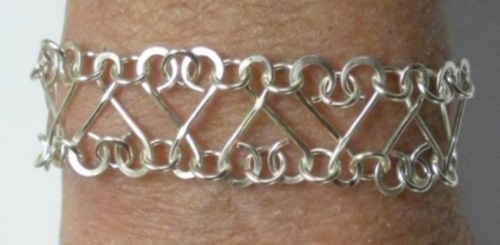 Heart Link Bracelet and Earrings
Heart Link Bracelet and Earrings
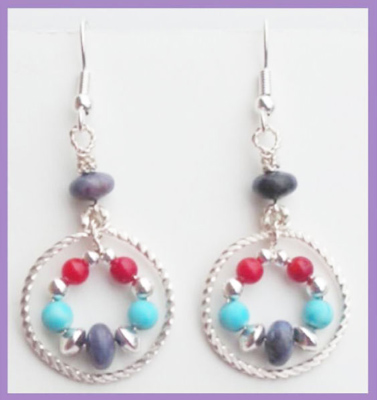 Crazy Hoop Earrings
Crazy Hoop Earrings
 Double Delight Jade Bracelet
Double Delight Jade Bracelet
 Swagged Pearl Pendant
Swagged Pearl Pendant
 Heart Earrings with Drops
Heart Earrings with Drops
 Scarab Bracelet
Scarab Bracelet
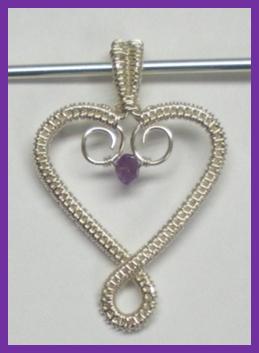 Birthstone Heart Pendant
Birthstone Heart Pendant
 Pearl of the Sea Woven Pendant
Pearl of the Sea Woven Pendant
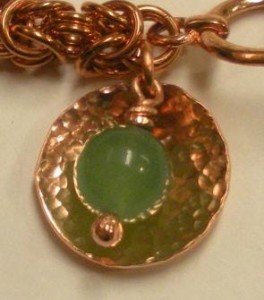 Bead Charm
Bead Charm
 Coiled Rosette Link
Coiled Rosette Link
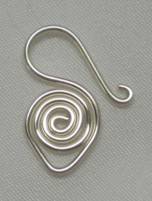 Wire Jewelry Component and Swan Hook
Wire Jewelry Component and Swan Hook
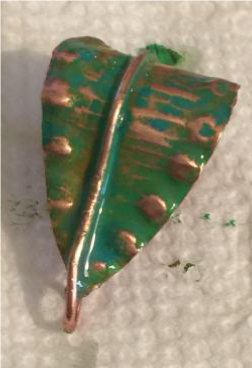 Leaf Bail
Leaf Bail
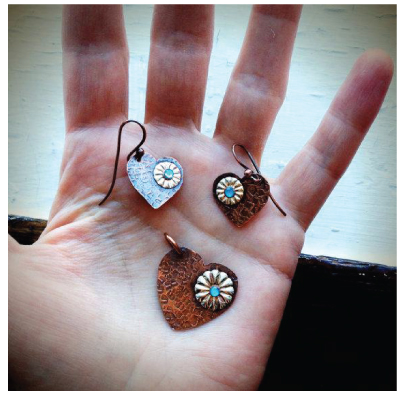 Component Templates with Heart Earrings and Pendant
Component Templates with Heart Earrings and Pendant
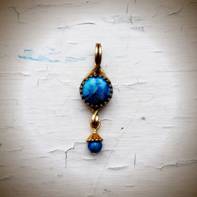 Ring Pendant
Ring Pendant
 Calla Lily Earrings
Calla Lily Earrings
 Birdhouse Pendant
Birdhouse Pendant
 Clamshell Earrings and Pendant
Clamshell Earrings and Pendant
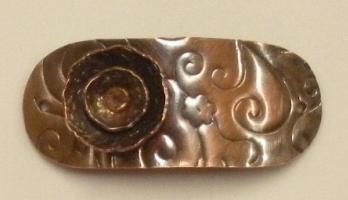 Bracelet Component
Bracelet Component
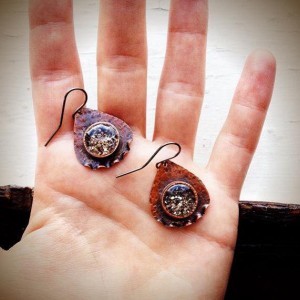 Teardrop Earrings and Pendant
Teardrop Earrings and Pendant
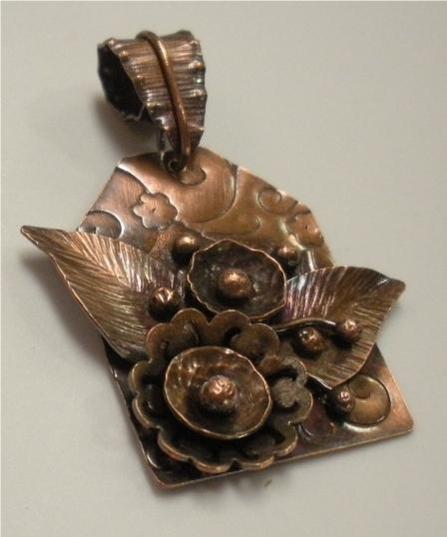 Tab Style Pendant
Tab Style Pendant
 Coiled End Caps
Coiled End Caps
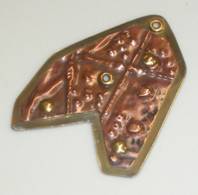 Freeform Pendant
Freeform Pendant
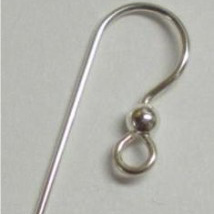 French Hook Ear Wires
French Hook Ear Wires
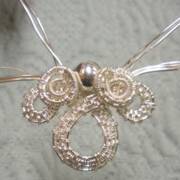 Necklace Component
Necklace Component
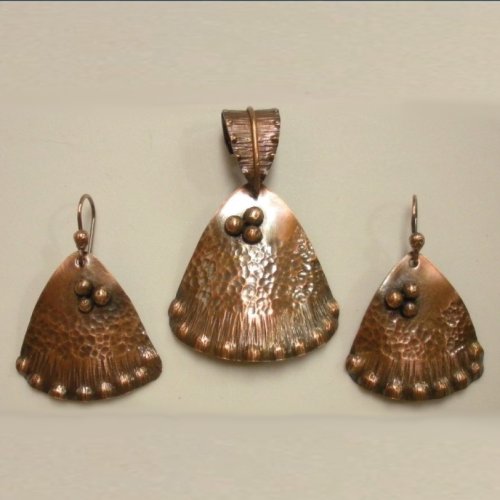 Triangle Shield Earrings, Pendant and Bail
Triangle Shield Earrings, Pendant and Bail
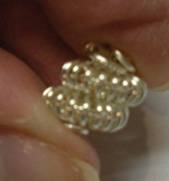 How to Make a Wire Coil and Bead
How to Make a Wire Coil and Bead
 Egyptian Coil Bracelet
Egyptian Coil Bracelet
 Focal Bead Egyptian Coiled Bracelet
Focal Bead Egyptian Coiled Bracelet
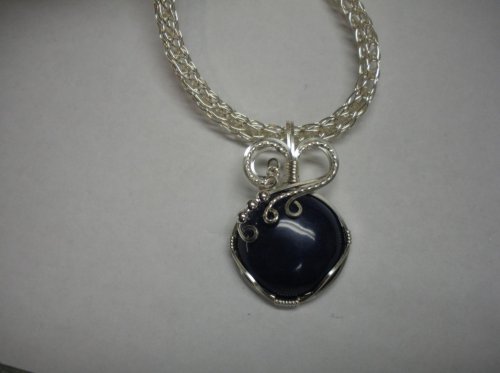 Sweetheart Round Cabochon Pendant
Sweetheart Round Cabochon Pendant
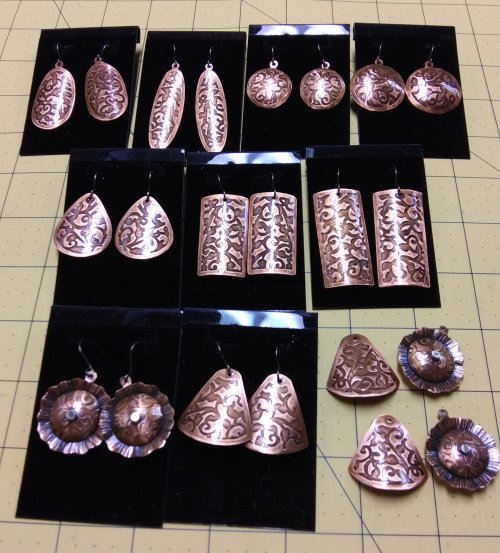 Cupcake Wrapper Earrings
Cupcake Wrapper Earrings
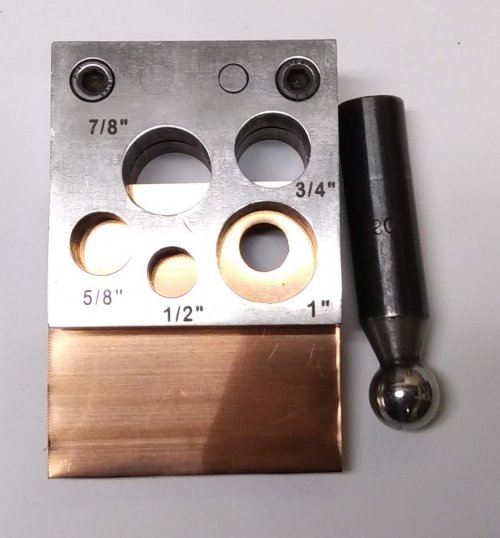 How to Make Metal Washers
How to Make Metal Washers
 Baseball Skin Keychain
Baseball Skin Keychain
 Pat's Silver Domed Earrings
Pat's Silver Domed Earrings
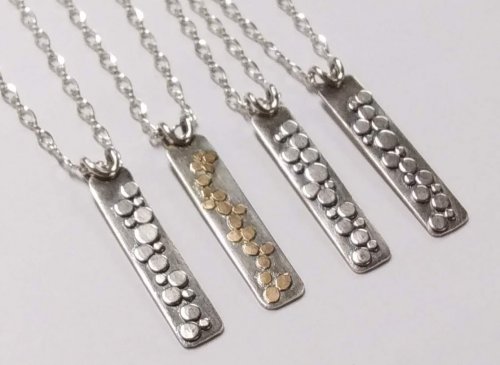 Blaze Your Own Path Pendant
Blaze Your Own Path Pendant
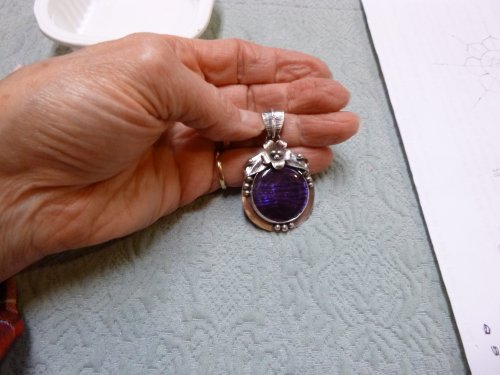 Semi Snap-on Bail
Semi Snap-on Bail
 Interlocking Faux Twist Wire Bracelet
Interlocking Faux Twist Wire Bracelet
 Fold Formed Cuff With Faux Roman Glass or Coin Cabochon
Fold Formed Cuff With Faux Roman Glass or Coin Cabochon
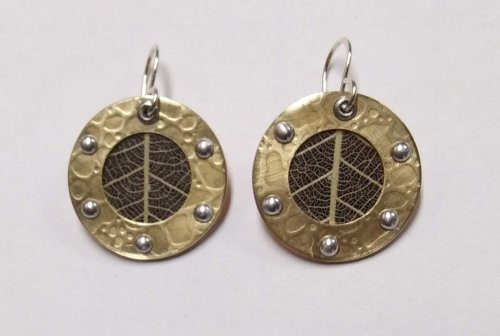 Steampunk Style Leaf Earrings
Steampunk Style Leaf Earrings
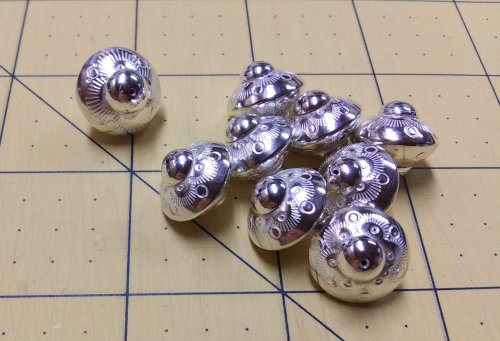 Stamped Saucer Beads
Stamped Saucer Beads
 Kat's Wire Hoop Earrings
Kat's Wire Hoop Earrings
 Simple Bail on a Coin Pendant
Simple Bail on a Coin Pendant
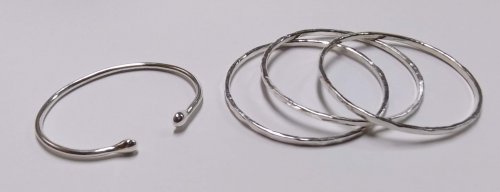 Wire Bangles
Wire Bangles
 Rolling Mill - or not - Cuff Bracelet
Rolling Mill - or not - Cuff Bracelet
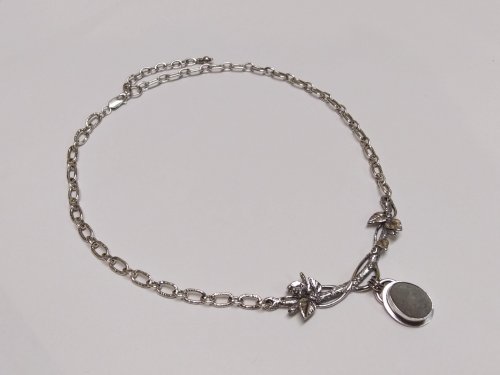 Jen's Chain
Jen's Chain
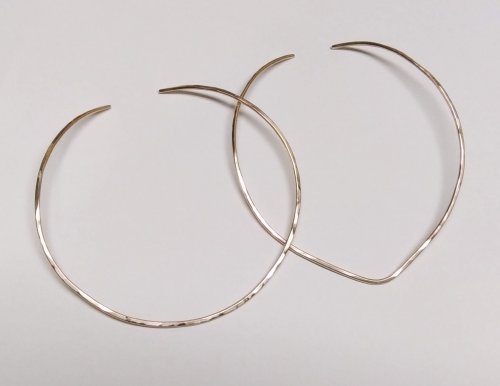 Making Neckwires
Making Neckwires
 Silver Scrap Wire Focals to Embellish
Silver Scrap Wire Focals to Embellish
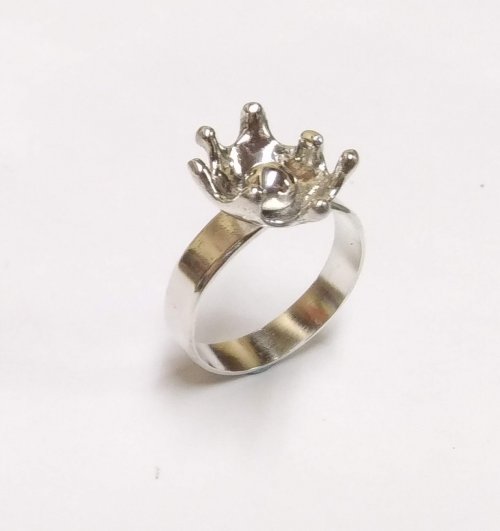 Splash Ring
Splash Ring
 Cobblestone Cab Earrings
Cobblestone Cab Earrings
 Multi Gemstone Necklace
Multi Gemstone Necklace
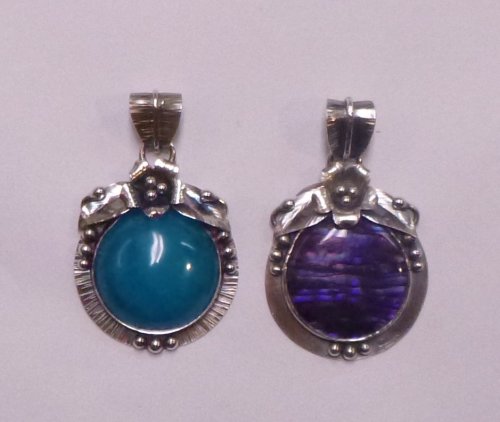 Southwest Style Pendant
Southwest Style Pendant
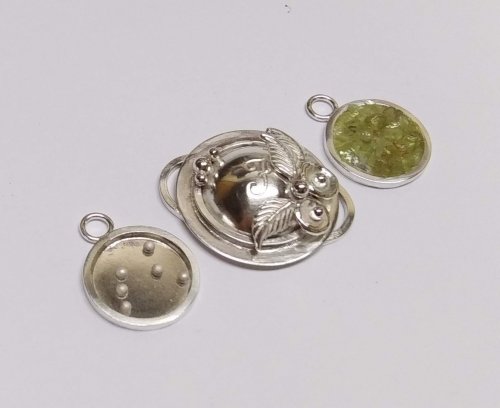 Bezels Using Square Wire
Bezels Using Square Wire
 Mixed Metal Sampler Bracelet 1
Mixed Metal Sampler Bracelet 1
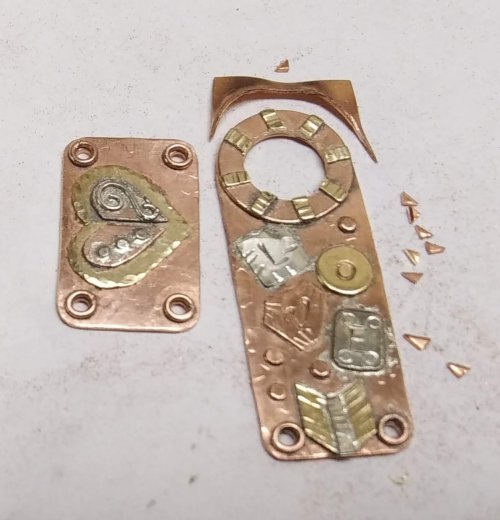 Mixed Metal Sampler Bracelet 2
Mixed Metal Sampler Bracelet 2
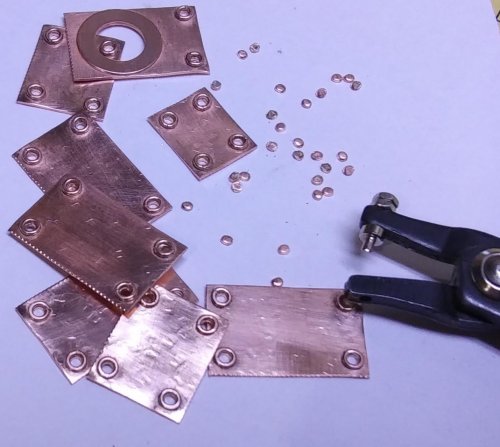 Mixed Metal Sampler Bracelet 3
Mixed Metal Sampler Bracelet 3
 Mixed Metal Sampler Bracelet 4 - Words Matter
Mixed Metal Sampler Bracelet 4 - Words Matter
 Mixed Metal Sampler Bracelet 5 - River Walk
Mixed Metal Sampler Bracelet 5 - River Walk
 Mixed Metal Sampler Bracelet 6 - A Little Bling
Mixed Metal Sampler Bracelet 6 - A Little Bling
 Mixed Metal Sampler Bracelets Series PUTTING IT ALL TOGETHER
Mixed Metal Sampler Bracelets Series PUTTING IT ALL TOGETHER
 Mixed Metal Sampler Bracelet 7 - Steampunk Space Oddity
Mixed Metal Sampler Bracelet 7 - Steampunk Space Oddity
 Mixed Metal Sampler Bracelet 8 - Fun Shapes
Mixed Metal Sampler Bracelet 8 - Fun Shapes
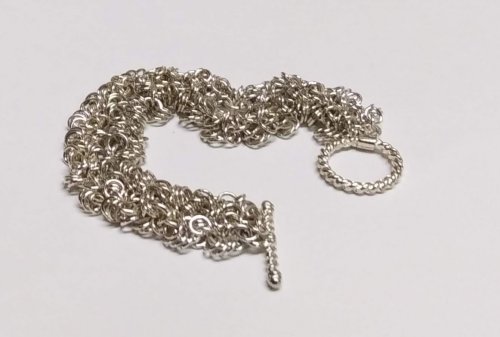 Jump Ring Fringe Bracelet
Jump Ring Fringe Bracelet
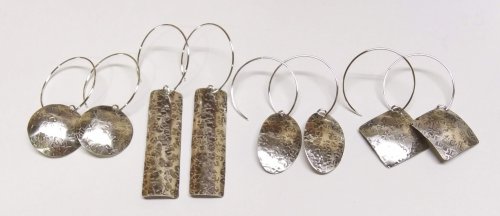 Easy Artisan Earrings
Easy Artisan Earrings
 Making Chain with Wubbers and Wire
Making Chain with Wubbers and Wire
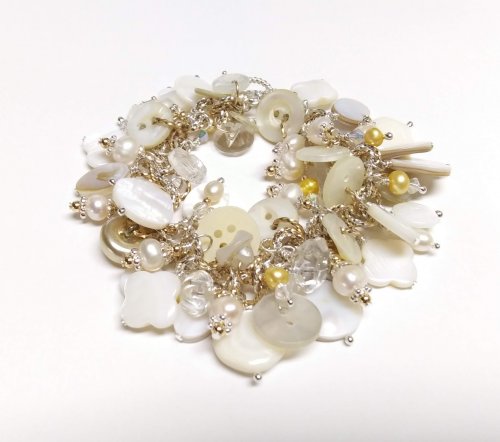 Heirloom Buttons and Beads Bracelet
Heirloom Buttons and Beads Bracelet
 Tiny Silver Charms part 1
Tiny Silver Charms part 1
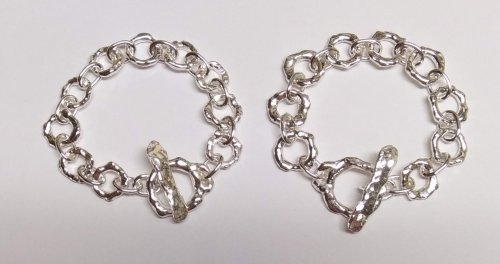 Argentium Silver Scrap Chain
Argentium Silver Scrap Chain
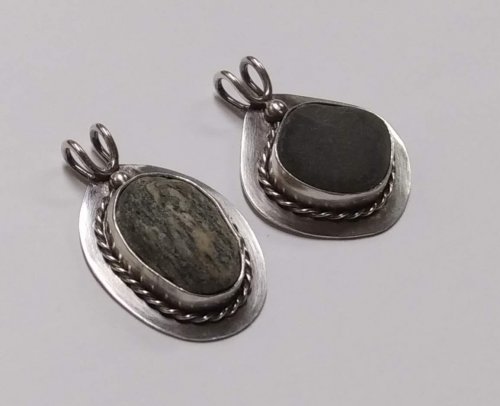 Sterling Lake Stone Pendant with Twisted Wire
Sterling Lake Stone Pendant with Twisted Wire
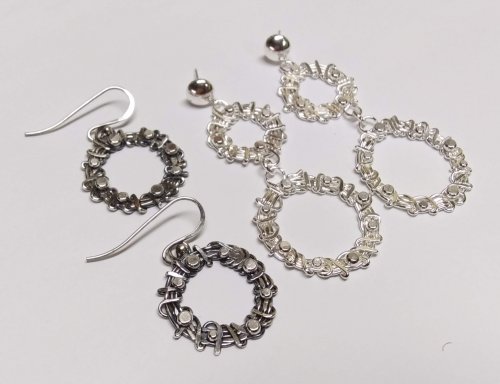 Smashing Drop Earrings
Smashing Drop Earrings
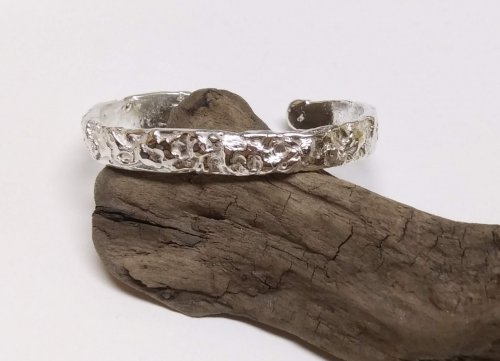 Argentium Silver Scrap Nugget Cuff
Argentium Silver Scrap Nugget Cuff
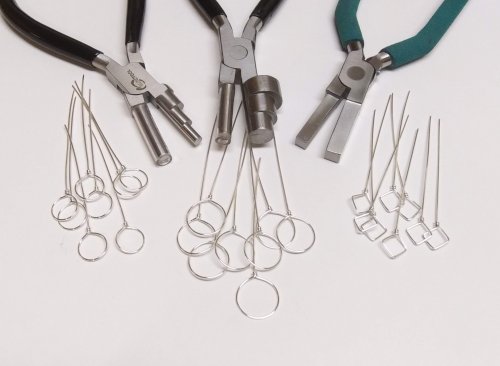 Finish Them Your Way Earrings
Finish Them Your Way Earrings
 Paddle Fringe Earrings
Paddle Fringe Earrings
 Seed Bead Earrings
Seed Bead Earrings
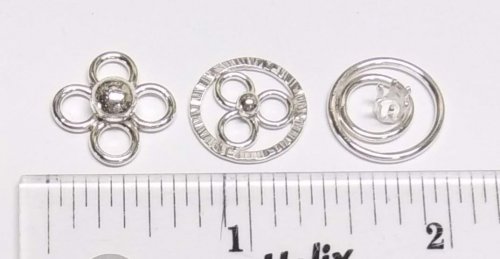 Bracelet Links 1, 2,3
Bracelet Links 1, 2,3
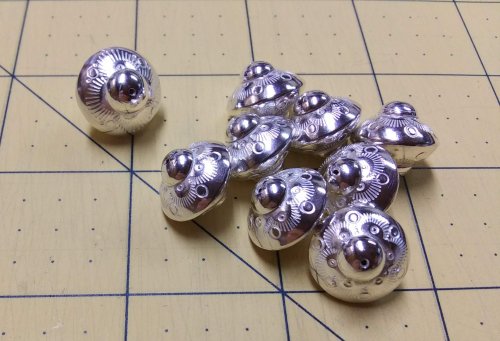 Stamped Saucer Beads
Stamped Saucer Beads
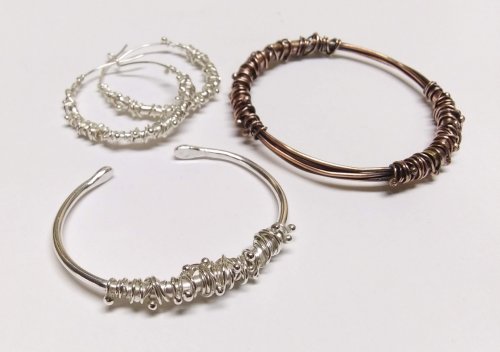 Chaos Scrap Wrap Jewelry
Chaos Scrap Wrap Jewelry
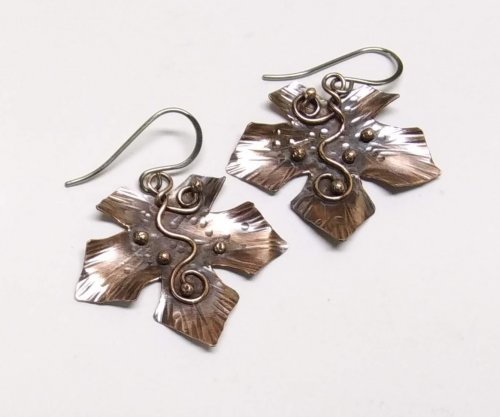 Maple Leaf Earrings
Maple Leaf Earrings
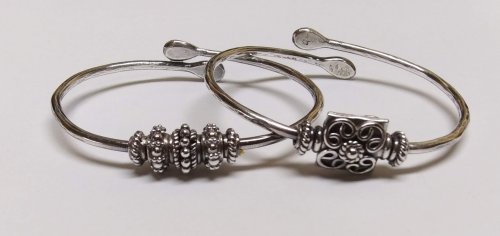 Child's Bracelet That Grows with Them
Child's Bracelet That Grows with Them
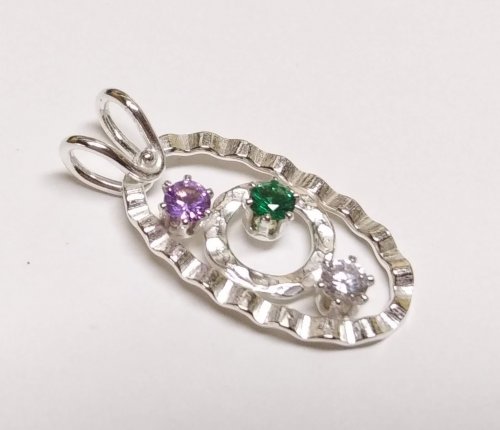 Mike's Surpirise Claire's Ripple Pendant
Mike's Surpirise Claire's Ripple Pendant
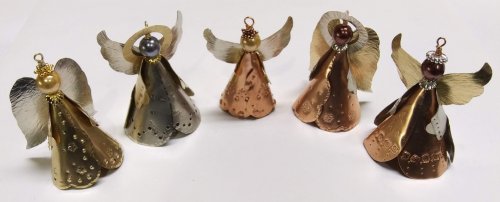 Angel Ornament
Angel Ornament
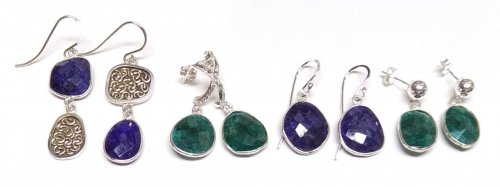 Diamonds, Emeralds, and Sapphires, Oh My.
Diamonds, Emeralds, and Sapphires, Oh My.
 Treasure Bezel Cups
Treasure Bezel Cups
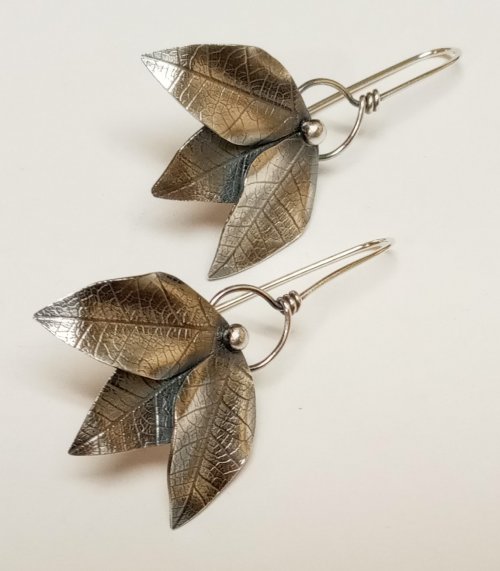 Three Leaves Earrings
Three Leaves Earrings
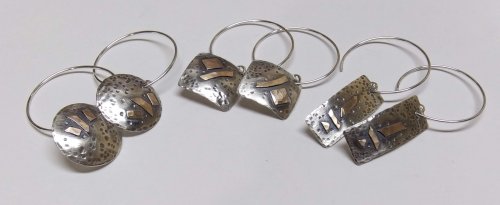 Silver and Gold Earrings
Silver and Gold Earrings
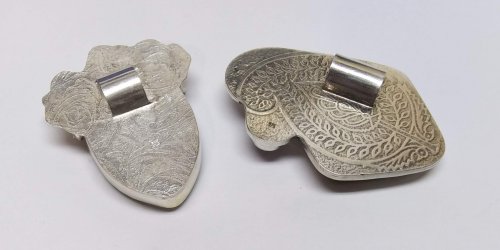 Make a Hidden Bail
Make a Hidden Bail
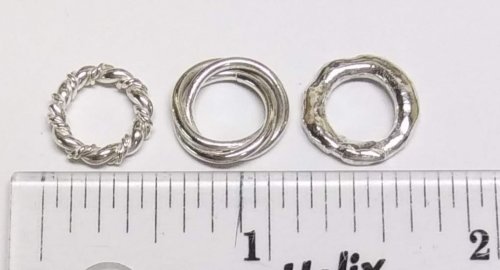 Wire Links 4, 5, 6
Wire Links 4, 5, 6
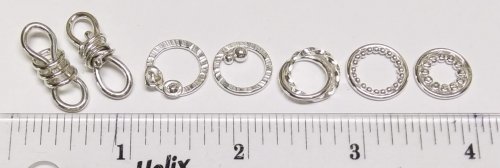 Wire Links 7, 8, 9, and 10
Wire Links 7, 8, 9, and 10
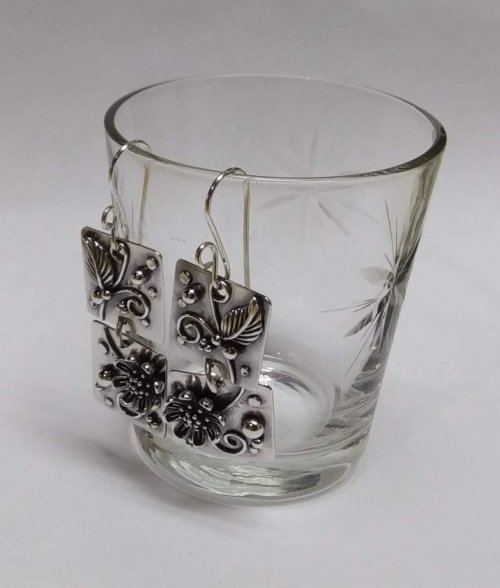 Double Loop Ear Wires
Double Loop Ear Wires
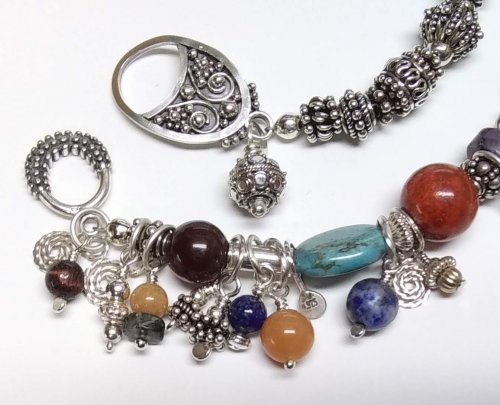 Balled and Paddled Head Pins
Balled and Paddled Head Pins
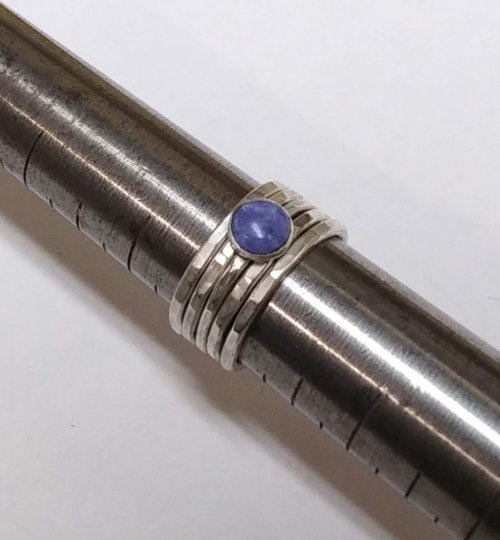 Textured Stacked Rings
Textured Stacked Rings
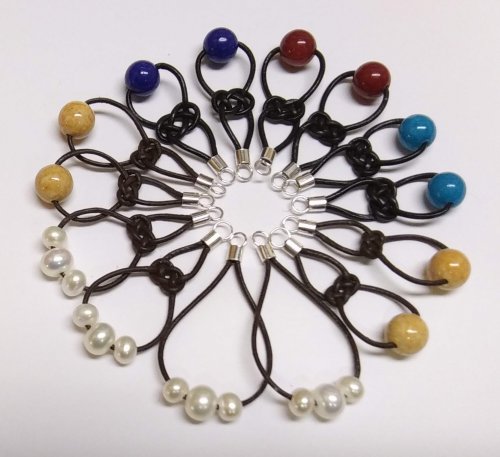 Cord and Bead Earrings
Cord and Bead Earrings
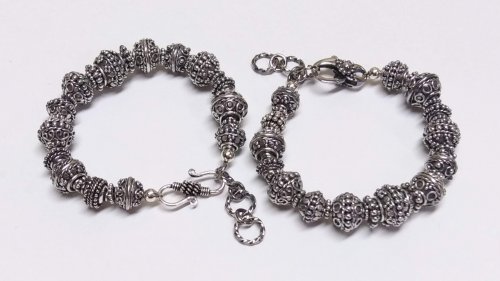 Bali Style Adjustable Closures
Bali Style Adjustable Closures
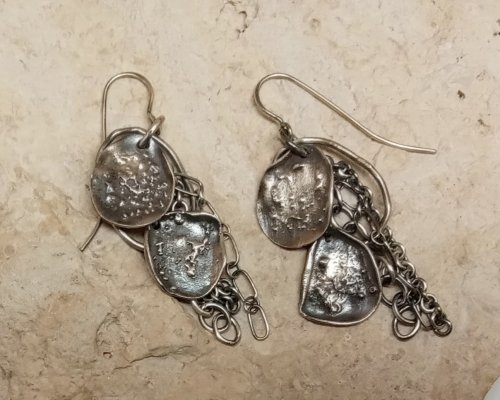 Organic Fused Silver Dust Earrings
Organic Fused Silver Dust Earrings
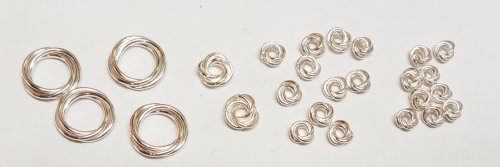 Mobius Rings
Mobius Rings
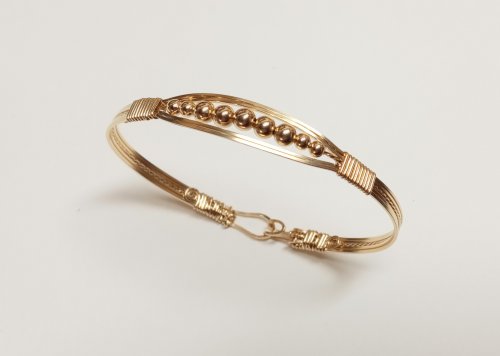 Dainty Bead and Wire Bangle with Hook Closure
Dainty Bead and Wire Bangle with Hook Closure
 Seed Bead and Nugget Necklace
Seed Bead and Nugget Necklace
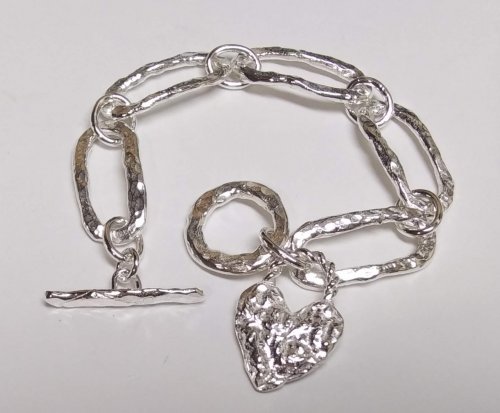 Love Locks Heart Charm
Love Locks Heart Charm
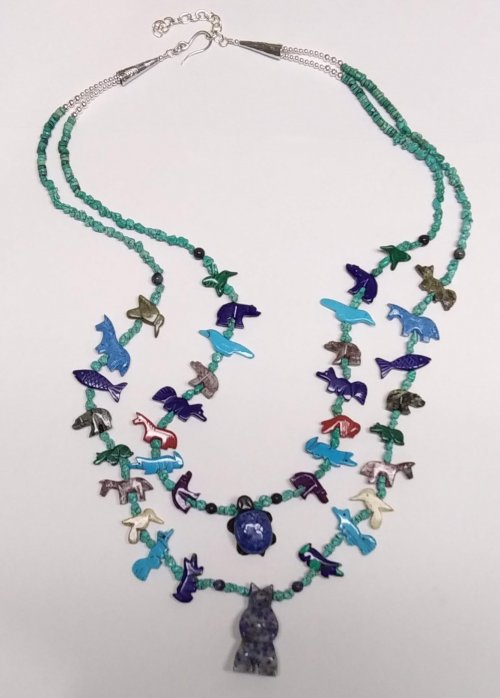 Traditional Southwest Style Hook Closures
Traditional Southwest Style Hook Closures
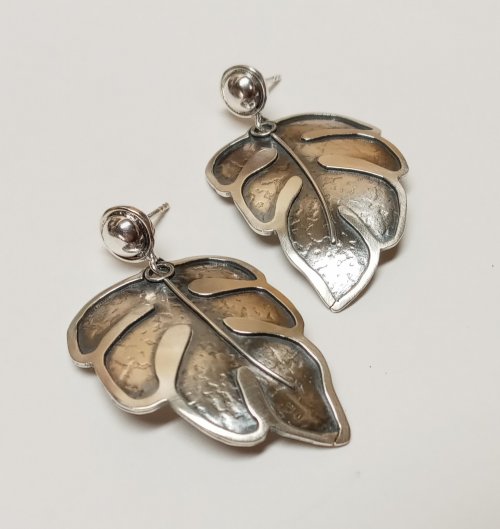 Negative Space Earrings
Negative Space Earrings
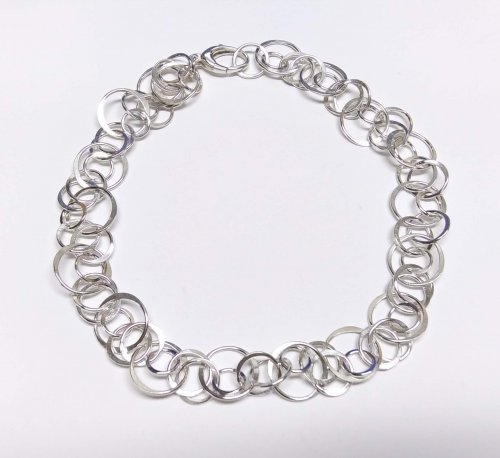 Jumbled Lacy Chain
Jumbled Lacy Chain
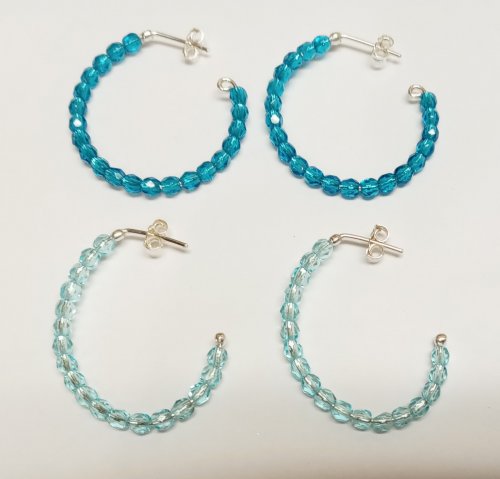 Easy Beaded Post Hoop Earrings
Easy Beaded Post Hoop Earrings
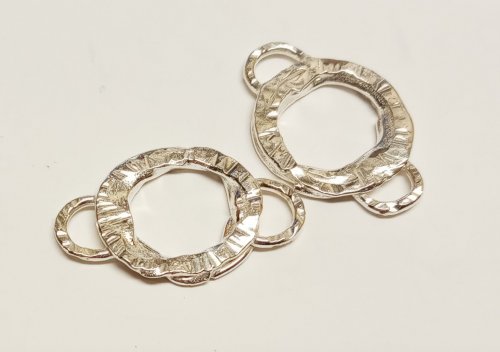 Rustic Silver Links
Rustic Silver Links
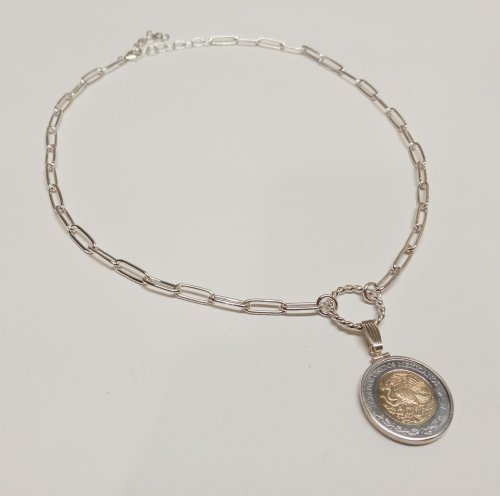 Make a Soldered Paperclip Chain
Make a Soldered Paperclip Chain
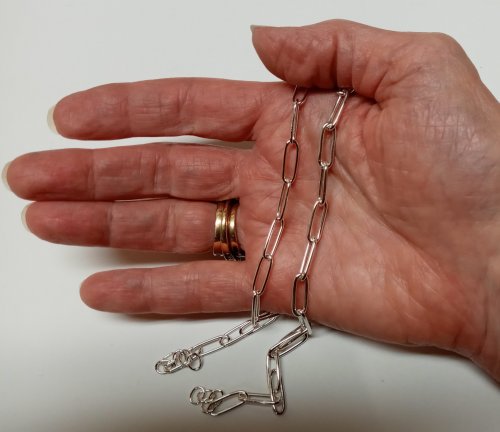 Make a Fused Paperclip Chain
Make a Fused Paperclip Chain
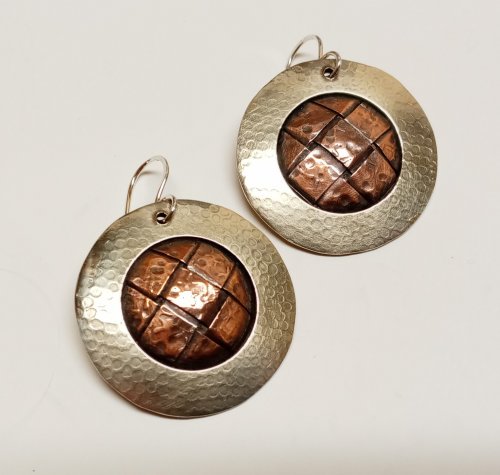 Make Woven Metal Strips to Use in Your Designs
Make Woven Metal Strips to Use in Your Designs
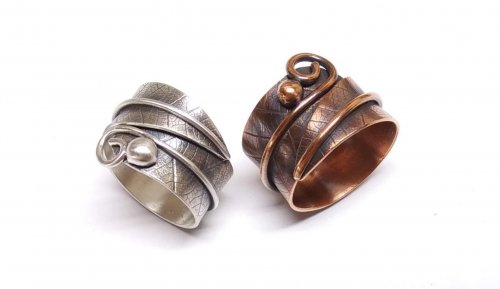 Leaf Wrap Metal Rings version 1
Leaf Wrap Metal Rings version 1
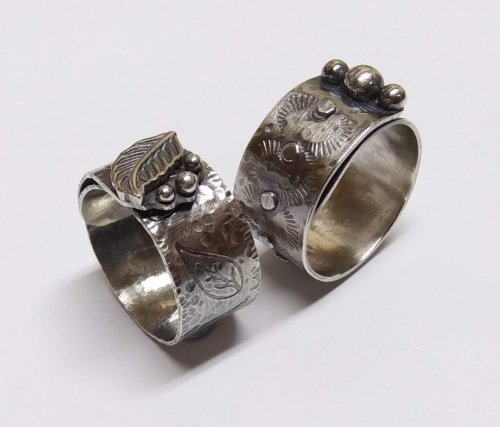 Leaf Wrap Metal Rings version 2
Leaf Wrap Metal Rings version 2
 Snowflake Ornaments
Snowflake Ornaments
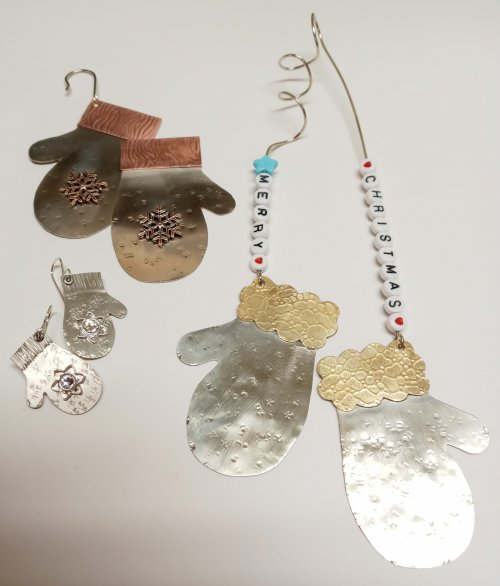 Mitten Ornament
Mitten Ornament
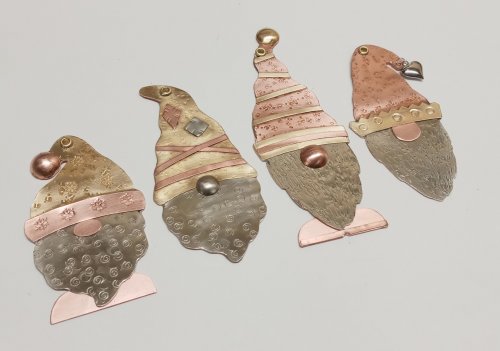 Gnome Ornaments
Gnome Ornaments
 A Partridge in a Pear Tree Earrings
A Partridge in a Pear Tree Earrings
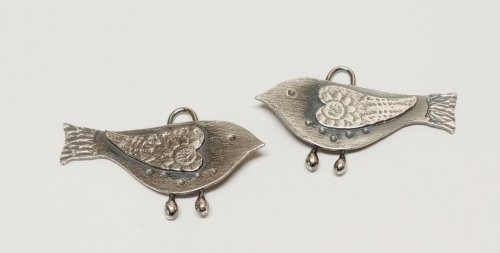 Two Turtle Doves Earrings
Two Turtle Doves Earrings
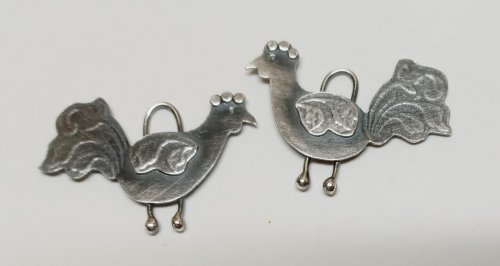 Three French Hens Earrings
Three French Hens Earrings
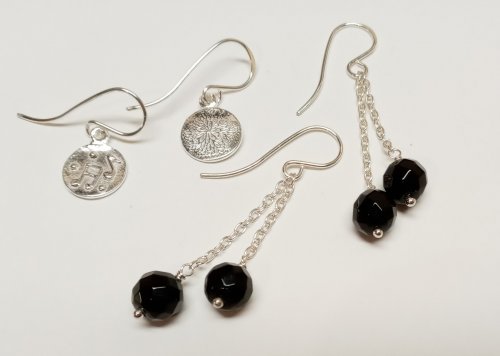 Four Calling Birds Earrings
Four Calling Birds Earrings
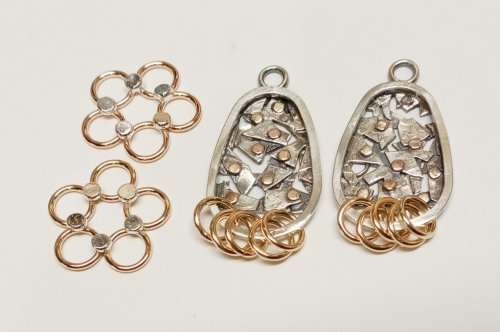 Five Golden Rings Earrings
Five Golden Rings Earrings
 Six Geese a Layin' Earrings
Six Geese a Layin' Earrings
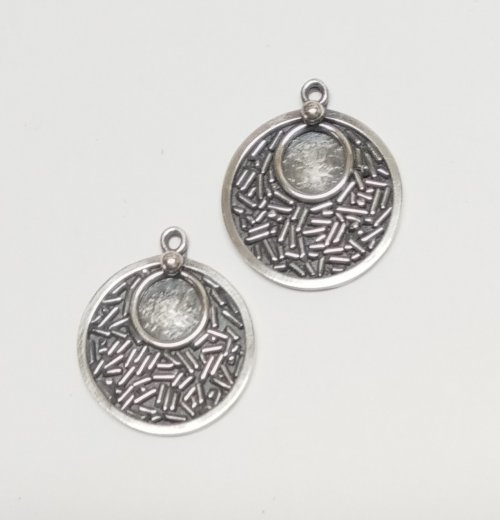 Seven Swans a Swimming Earrings
Seven Swans a Swimming Earrings
 Eight Maids a Milking earrings
Eight Maids a Milking earrings
 Nine Ladies Dancing Earrings
Nine Ladies Dancing Earrings
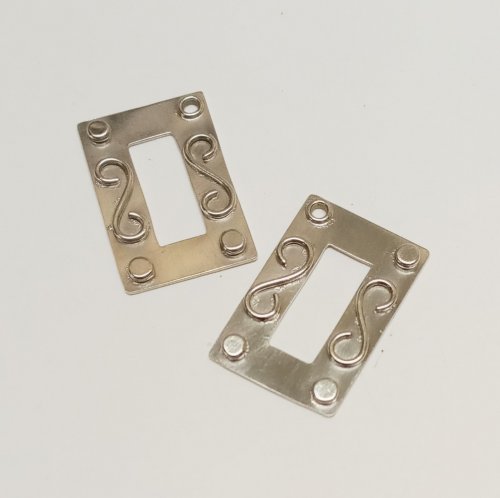 Ten Lords a Leaping Earrings
Ten Lords a Leaping Earrings
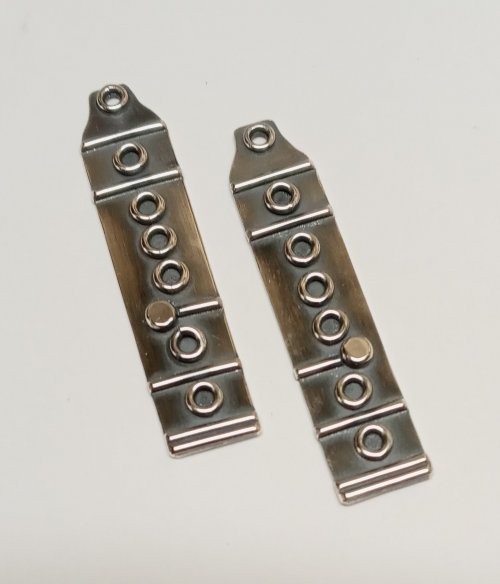 Eleven Pipers Piping Earrings
Eleven Pipers Piping Earrings
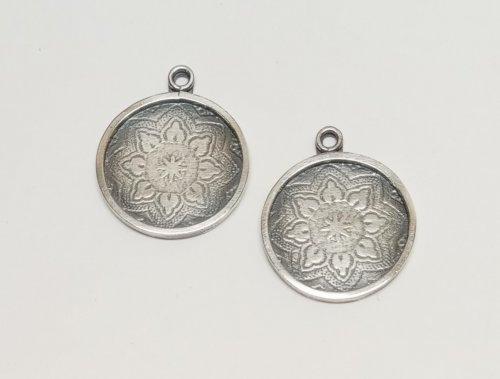 Twelve Drummers Drumming Earrings
Twelve Drummers Drumming Earrings
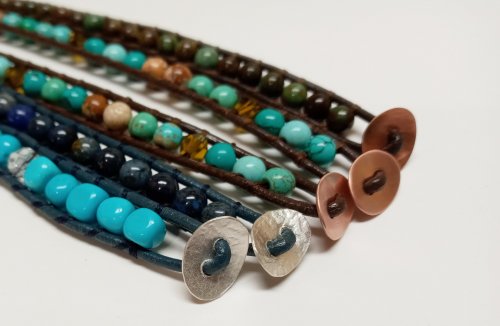 Make Your Own Bracelet Button Clasps
Make Your Own Bracelet Button Clasps
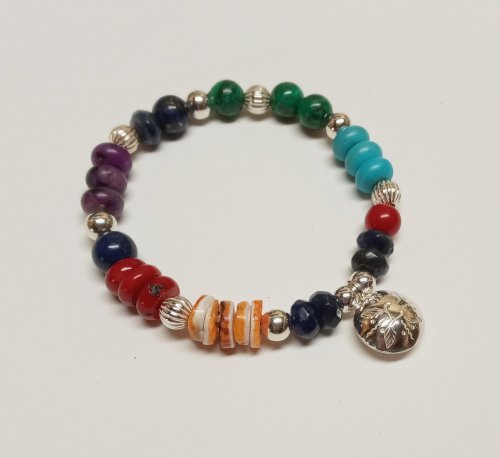 Little Saucer Bells
Little Saucer Bells
 Doodads - Fun Findings
Doodads - Fun Findings
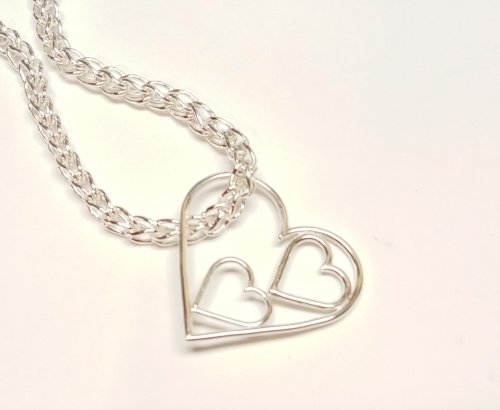 No Measure Hearts, Any Size, Any Gauge
No Measure Hearts, Any Size, Any Gauge
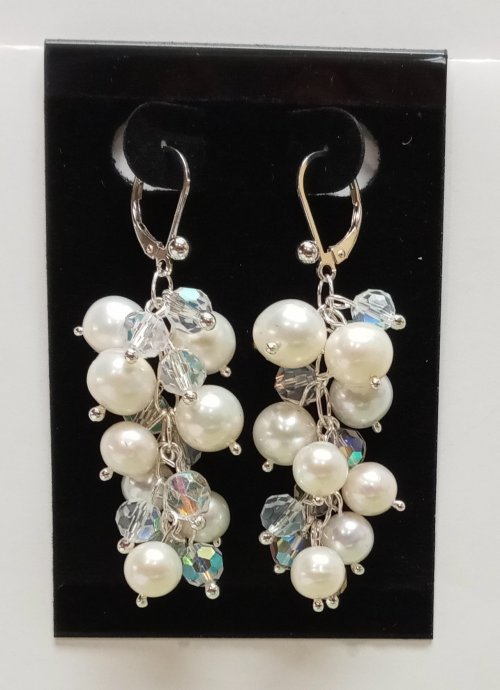 Cascading Drops Earrings
Cascading Drops Earrings
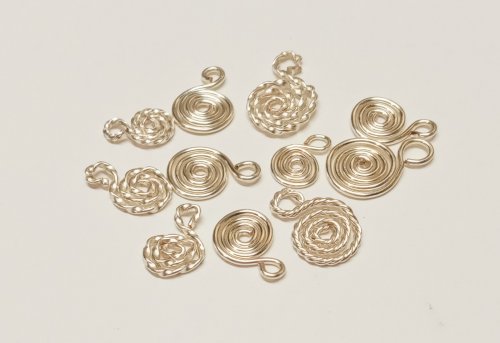 WIre Basics - Spiral Charms
WIre Basics - Spiral Charms
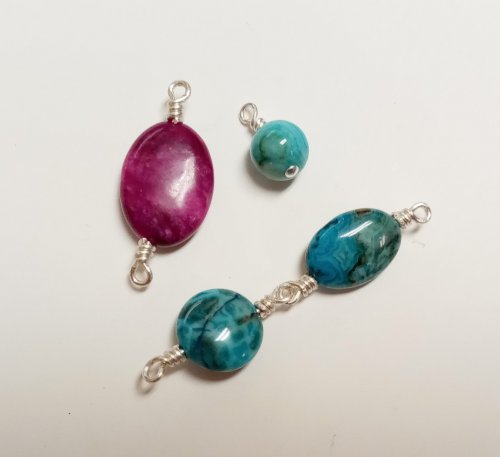 Wire Basics - Wrapped Loops and Links
Wire Basics - Wrapped Loops and Links
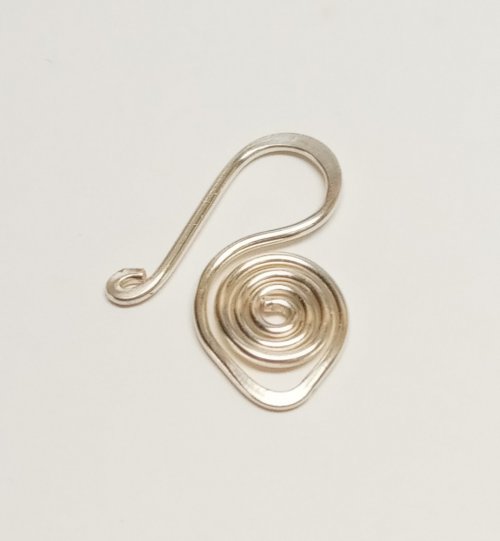 Wire Basics - Simple Swan Hook
Wire Basics - Simple Swan Hook
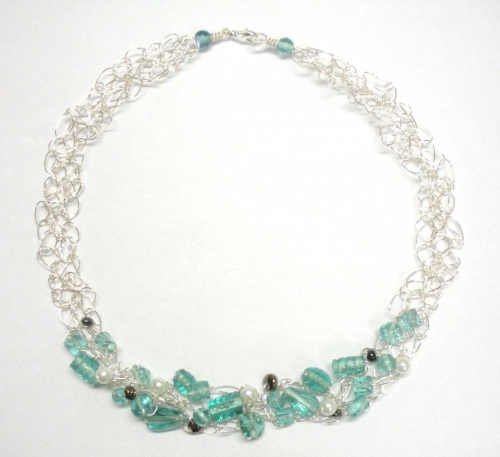 Wire Crocheted Necklace
Wire Crocheted Necklace
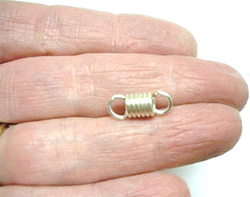 Wire Basics - Wire Garage Door Spring Link
Wire Basics - Wire Garage Door Spring Link
 Easy Post Hoop Earrings
Easy Post Hoop Earrings
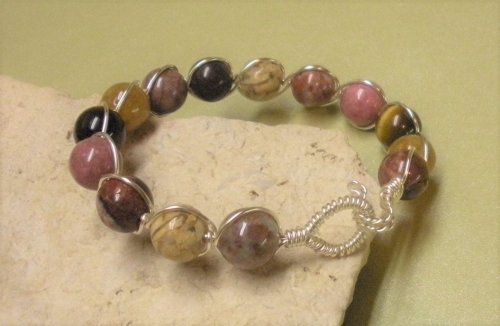 Double Wrap Wire Bangle Bracelet
Double Wrap Wire Bangle Bracelet
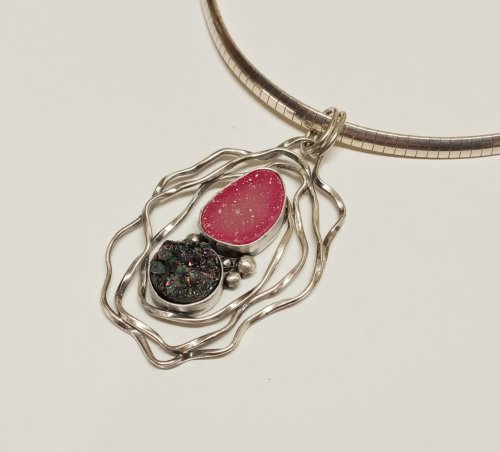 Organic Wire Pendant
Organic Wire Pendant
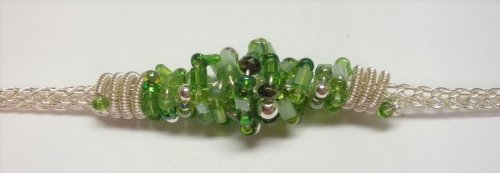 Coiled, Beaded Slide
Coiled, Beaded Slide
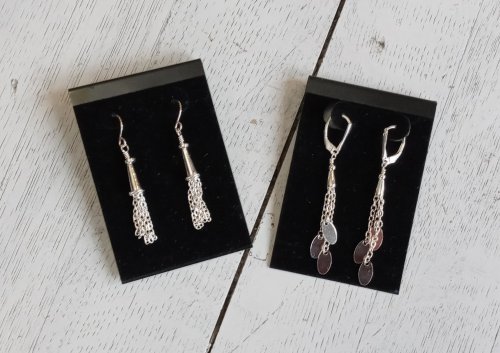 Cone and Chain Earrings
Cone and Chain Earrings
 Embellished Sterling Cones
Embellished Sterling Cones
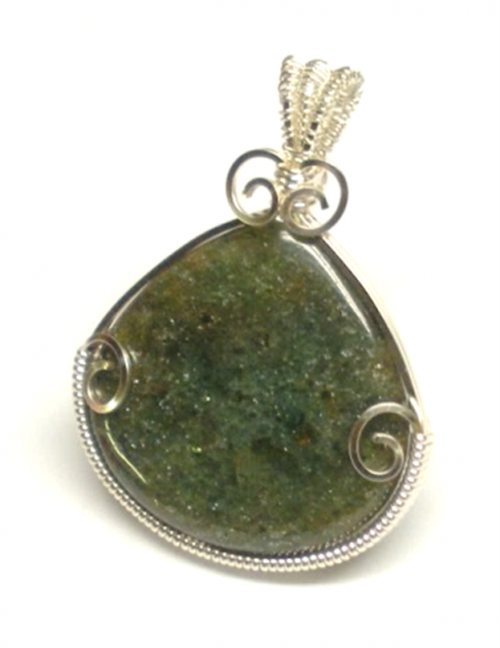 Classic Wire Wrap Bezelled Pendant
Classic Wire Wrap Bezelled Pendant
 Wire Wrap a Coin
Wire Wrap a Coin
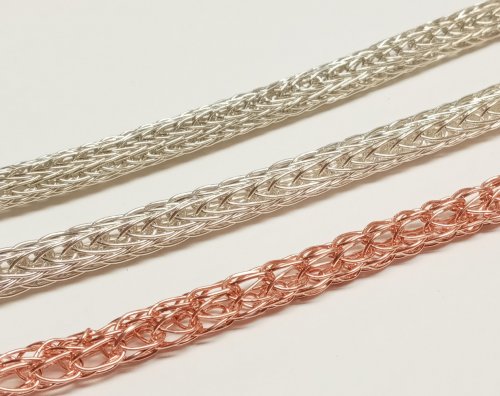 Viking Knit
Viking Knit
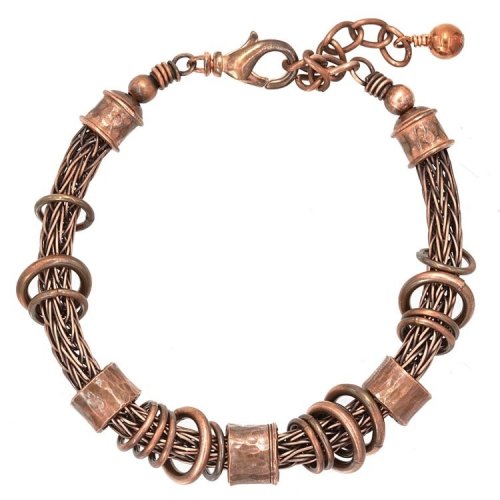 Viking Knit Bracelet
Viking Knit Bracelet
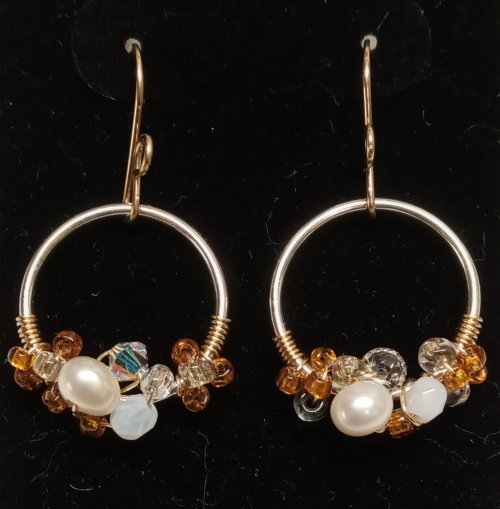 Bead-Wrapped Hoop Earrings
Bead-Wrapped Hoop Earrings
 Copper Feather Earrings
Copper Feather Earrings
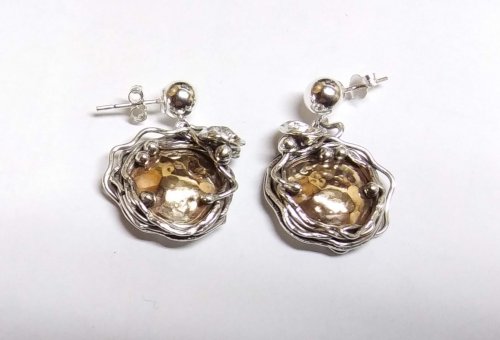 Soldering a Dome to a Backplate
Soldering a Dome to a Backplate
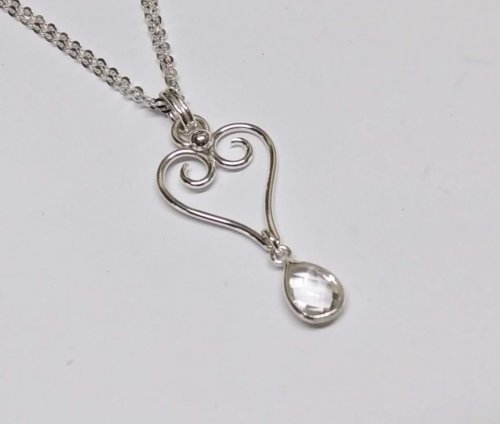 Wire Heart Pendant with Gemstone Drop
Wire Heart Pendant with Gemstone Drop
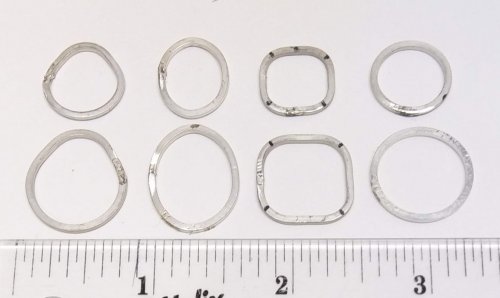 Make Basic Wire Shapes for Jewelry
Make Basic Wire Shapes for Jewelry
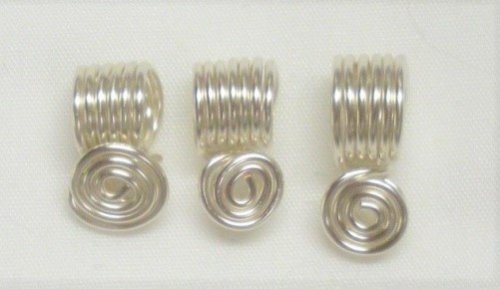 Make Simple Wire Slide Bails
Make Simple Wire Slide Bails
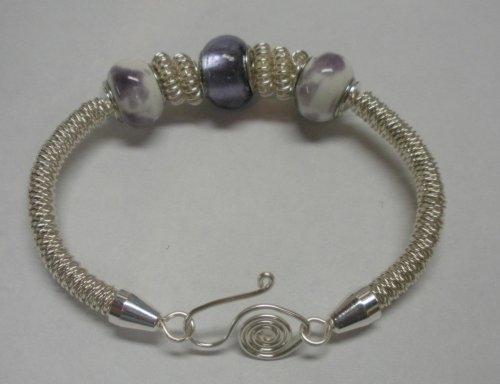 Coiled Bead and Twisted Wire Bracelet
Coiled Bead and Twisted Wire Bracelet
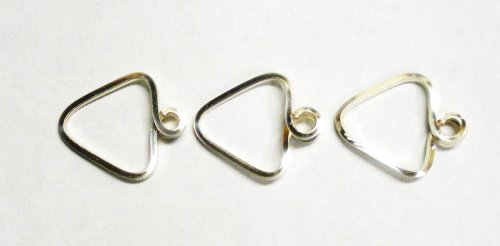 Wire Triangle Link
Wire Triangle Link
 Bali Style Focal Toggle
Bali Style Focal Toggle
 Silver Nuggets
Silver Nuggets
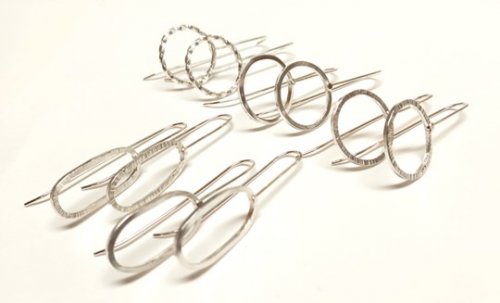 Fun Shapes Fish Hook Earrings
Fun Shapes Fish Hook Earrings
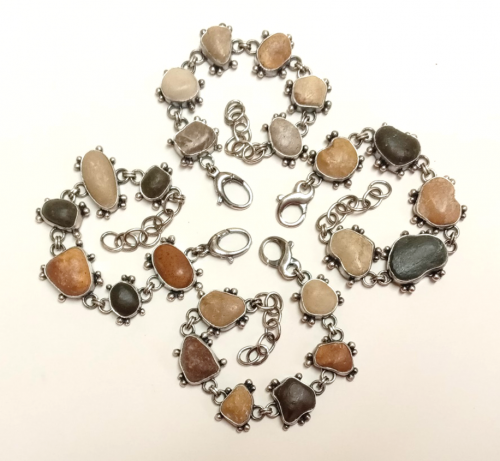 After the Rain Bracelets
After the Rain Bracelets
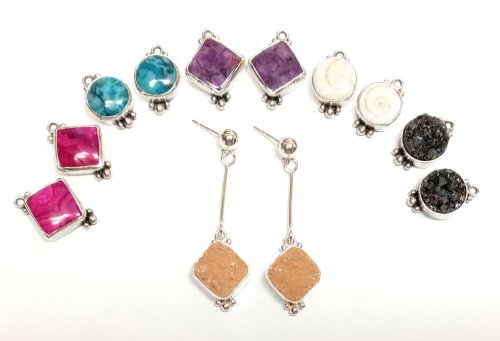 Dangling Drop Earrings
Dangling Drop Earrings
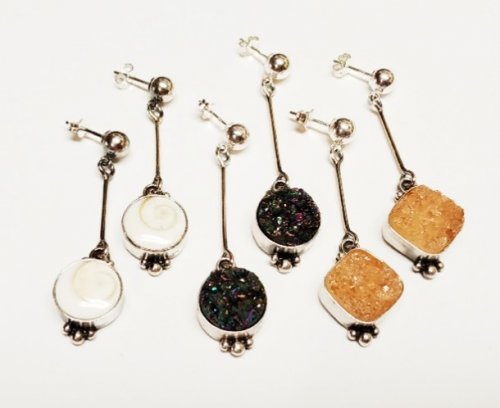 Dangling Chain Sticks
Dangling Chain Sticks
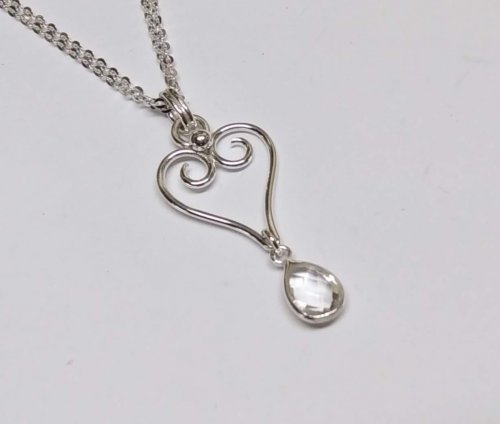 Wire Heart Pendant with Gemstone Drop
Wire Heart Pendant with Gemstone Drop
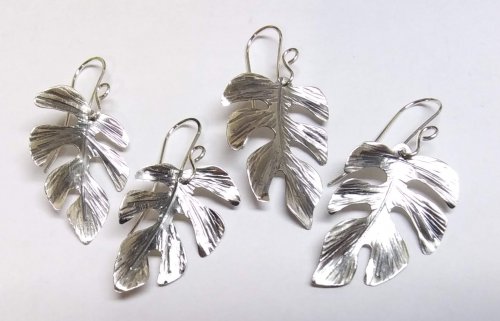 Tropical Leaf Earrings
Tropical Leaf Earrings
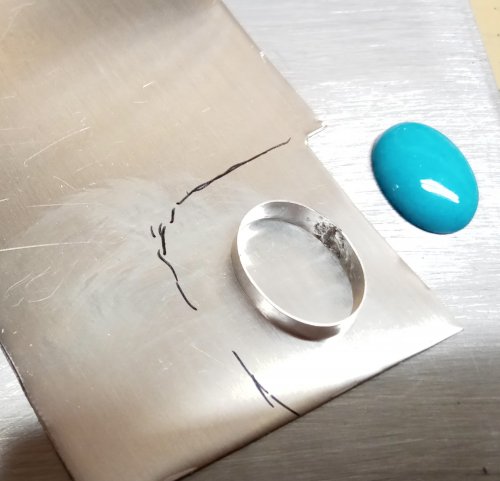 Basic Bezel Wire Tutorial
Basic Bezel Wire Tutorial
 Dog Tag Style Necklace
Dog Tag Style Necklace
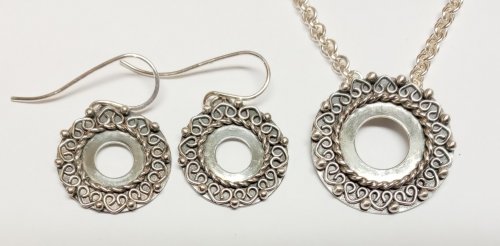 Lacy Washers
Lacy Washers
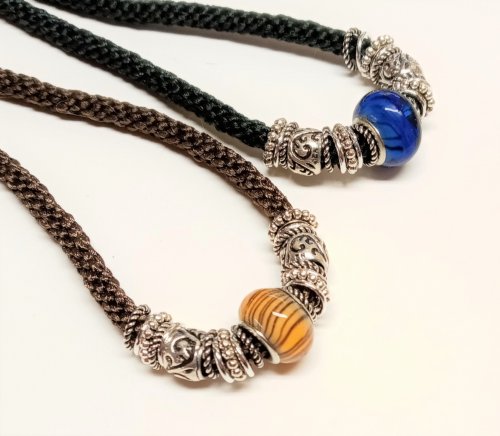 8-Strand Kumihimo
8-Strand Kumihimo
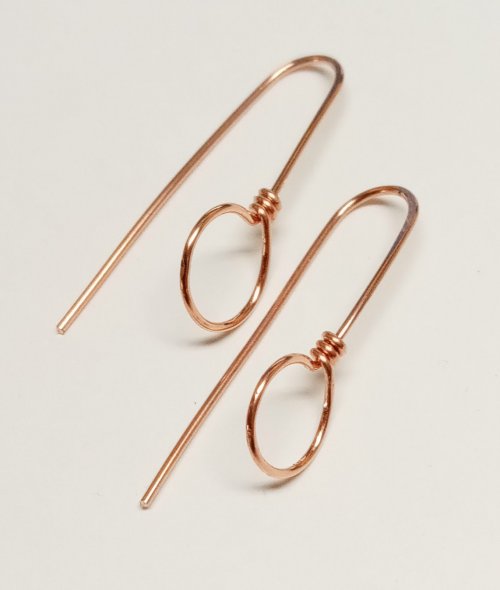 Closed Loop Ear Wires
Closed Loop Ear Wires
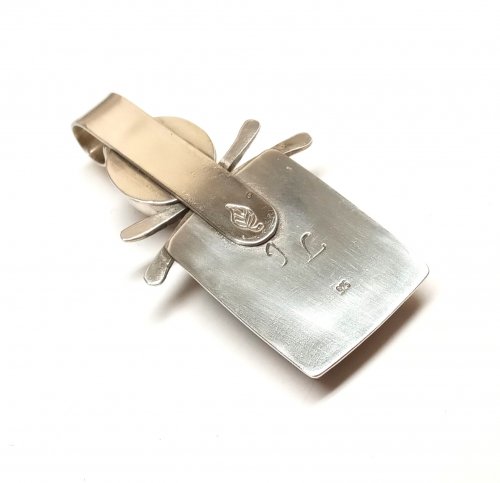 Simple Strip Bails from Scratch
Simple Strip Bails from Scratch
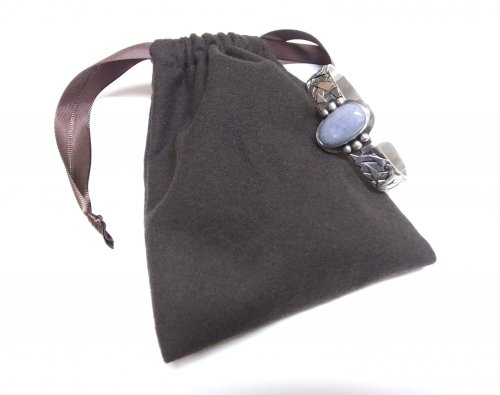 Anti-tarnish Silver Cloth Bags
Anti-tarnish Silver Cloth Bags
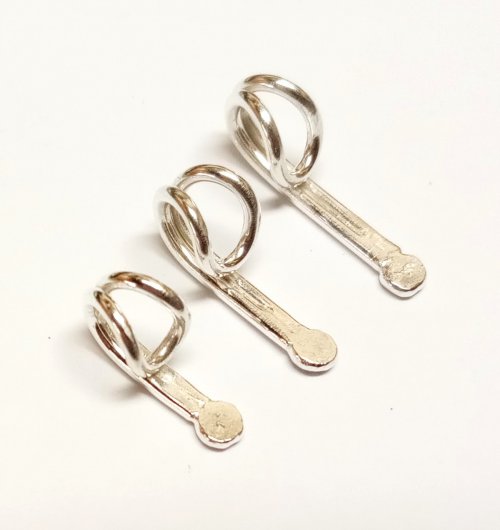 Cotter Pin Style Bail
Cotter Pin Style Bail
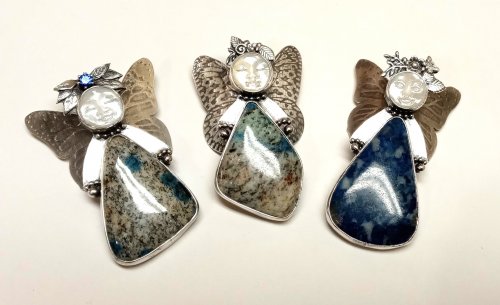 Holiday Woodland Fairy Ornament
Holiday Woodland Fairy Ornament
 Happy Holly Days Wreath Ornament
Happy Holly Days Wreath Ornament
 Happy Holly Days Leaves and Berries
Happy Holly Days Leaves and Berries
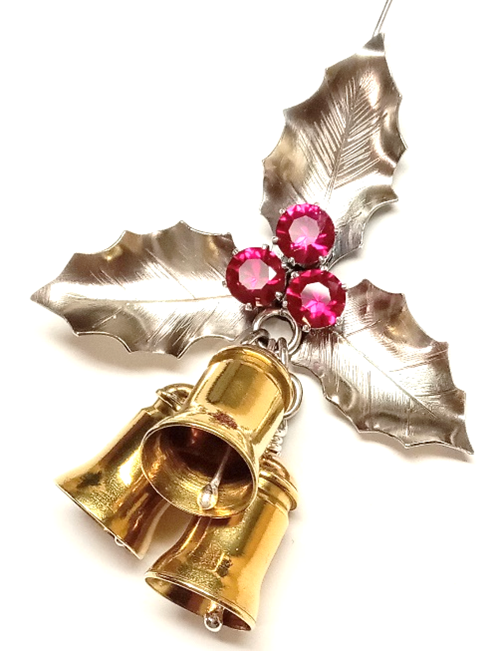 Happy Holly Days Bells Ornament
Happy Holly Days Bells Ornament
 Art Deco Wire Wrapped Pendant
Art Deco Wire Wrapped Pendant
 Twisted Wire Jump Rings
Twisted Wire Jump Rings
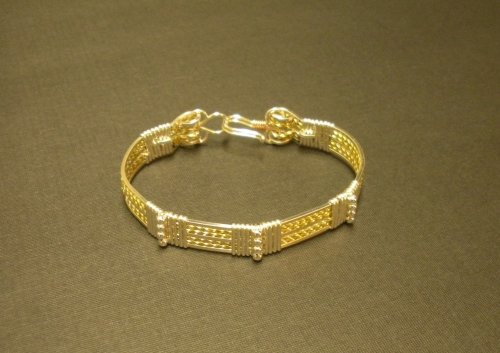 Two-tone Beaded Bangle
Two-tone Beaded Bangle
 Sweetheart Pendant
Sweetheart Pendant
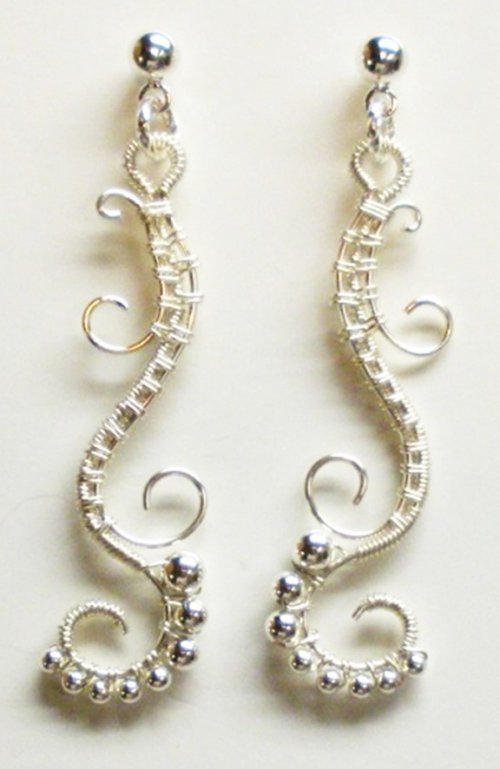 Waves on the Beach Earrings
Waves on the Beach Earrings
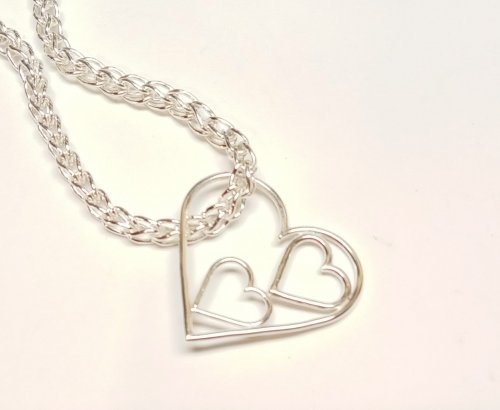 Any Size Wire Hearts - Any Size, Any Gauge
Any Size Wire Hearts - Any Size, Any Gauge
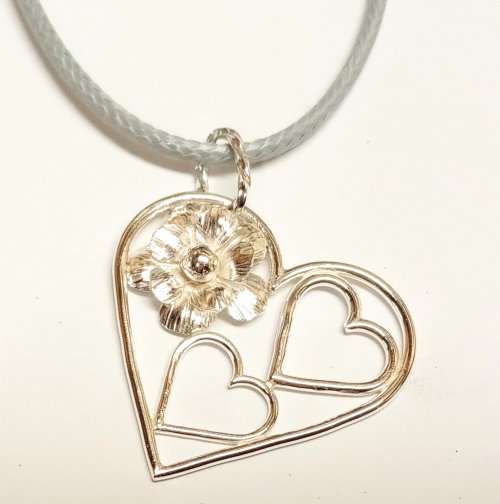 Just in Case Heart Pendant
Just in Case Heart Pendant
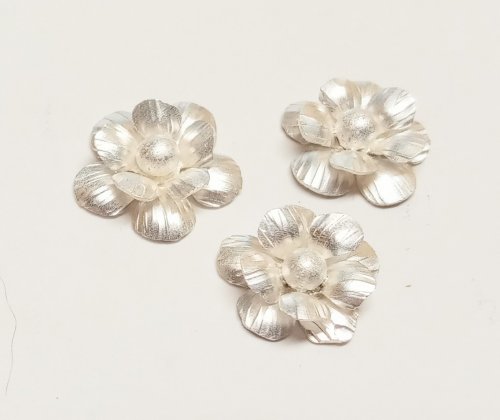 Small Flower Embellishment
Small Flower Embellishment
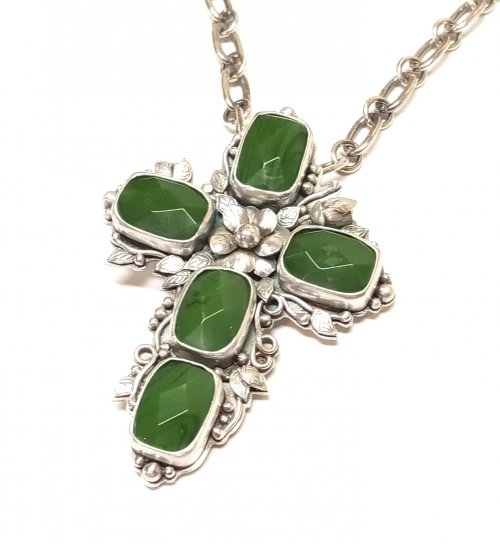 Making Tiny Dapped Metal Leaves
Making Tiny Dapped Metal Leaves
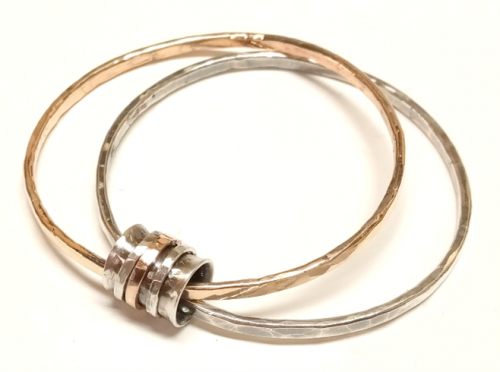 Spinner Fidget Bangles
Spinner Fidget Bangles
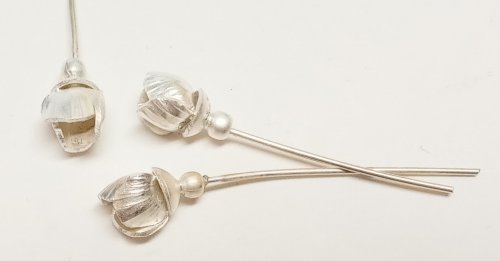 Small Flower Bud Embellishment
Small Flower Bud Embellishment
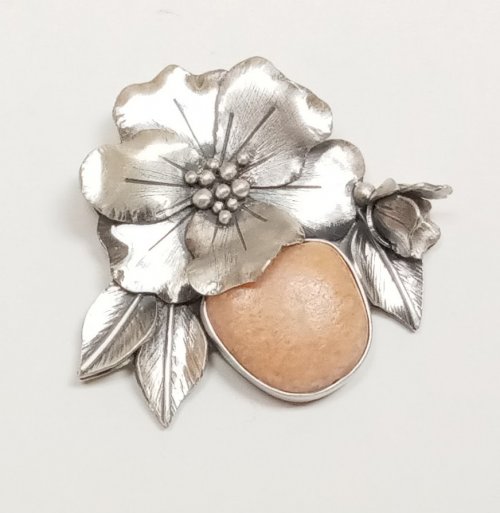 Three Petal Bud and Layered Embellishment
Three Petal Bud and Layered Embellishment
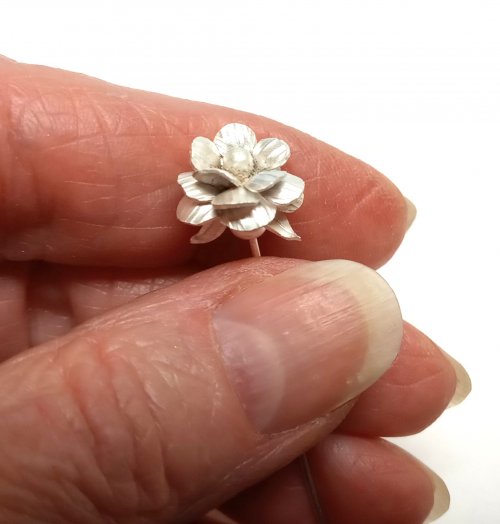 Creating a Flower Stem
Creating a Flower Stem
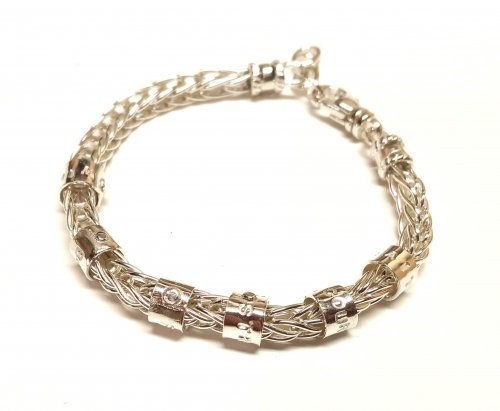 Stamped Tube Beads
Stamped Tube Beads
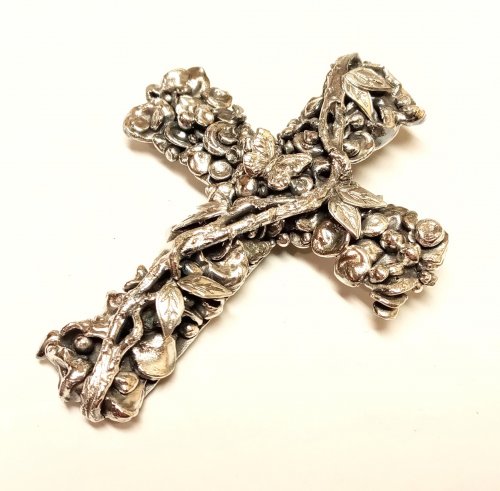 Water Cast Scrap Cross
Water Cast Scrap Cross
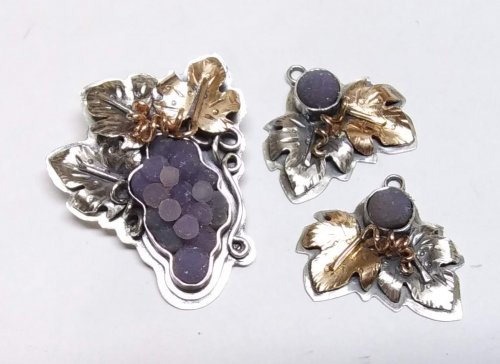 Sugared Grapes Pendant
Sugared Grapes Pendant
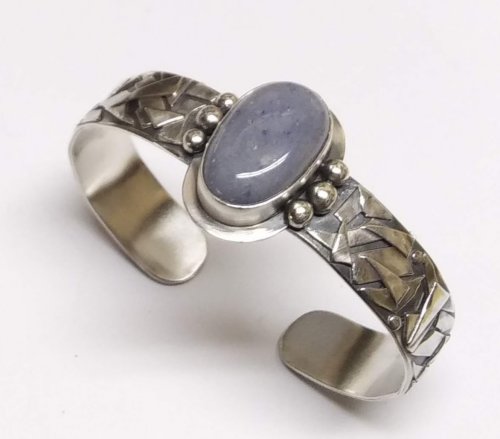 Tourist Rock Cuff Bracelet
Tourist Rock Cuff Bracelet
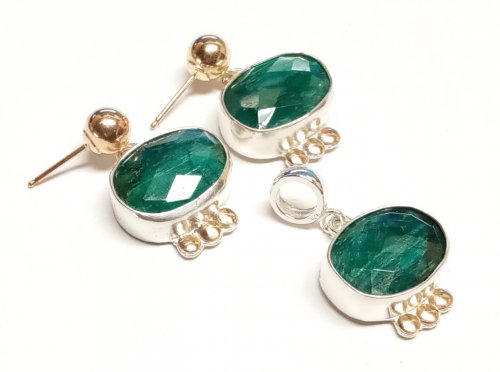 Gemstone Chains Reimagined
Gemstone Chains Reimagined
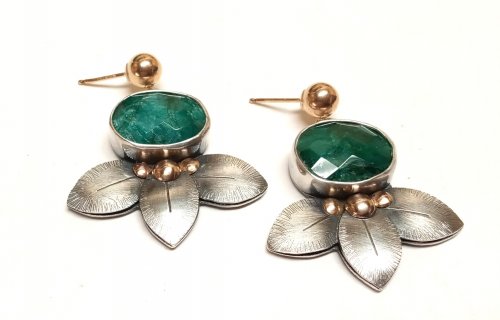 Checkerboard Faceted Earrings
Checkerboard Faceted Earrings
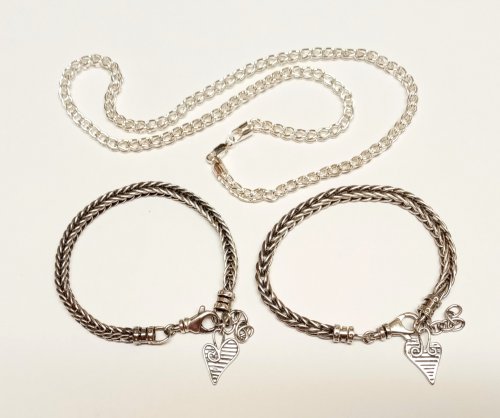 Foxtail Chain aka Loop-in-Loop
Foxtail Chain aka Loop-in-Loop
 Handmade Chunky Chain
Handmade Chunky Chain
 Capture a Summer Memory
Capture a Summer Memory
 Stone Key Fob
Stone Key Fob
 Sprinkles Link
Sprinkles Link
 Ball Chain Embellishments
Ball Chain Embellishments
 Handmade Ornament Hooks
Handmade Ornament Hooks
 Coin Focal
Coin Focal
 Branching Out
Branching Out
 Broken AKA Bits and Pieces Dish Jewelry
Broken AKA Bits and Pieces Dish Jewelry
 Easy No Solder Hinges
Easy No Solder Hinges
 Small Embellished Classic Cross
Small Embellished Classic Cross
 Closure Focal Necklace
Closure Focal Necklace
 Classic Cameo Pendant
Classic Cameo Pendant
 Bali Style Earrings
Bali Style Earrings
 Combine Druzy With Straw and Water Cast Components
Combine Druzy With Straw and Water Cast Components
 Feathers and Leaves Earring Remodel
Feathers and Leaves Earring Remodel
 Five Year Bracelet
Five Year Bracelet
 Designer Stick Earrings Remodel
Designer Stick Earrings Remodel
 Hammered Luxury
Hammered Luxury
 Recycled Black Pearl Earrings
Recycled Black Pearl Earrings
 Disc Cutter Earrings Remodel
Disc Cutter Earrings Remodel
 Show Your Colors Bracelet
Show Your Colors Bracelet
 CZ Explosion Necklace
CZ Explosion Necklace
 Domed Stud with Drop Loop
Domed Stud with Drop Loop
 Gemstone Stud Earrings With Hanging Loop
Gemstone Stud Earrings With Hanging Loop
 Split Bead Earrings
Split Bead Earrings
 Ripple Bracelet
Ripple Bracelet
 Double Foxtail Chain
Double Foxtail Chain
 Stretch Bracelets
Stretch Bracelets
 Copper Feather Earrings Remodel Into Cuff
Copper Feather Earrings Remodel Into Cuff
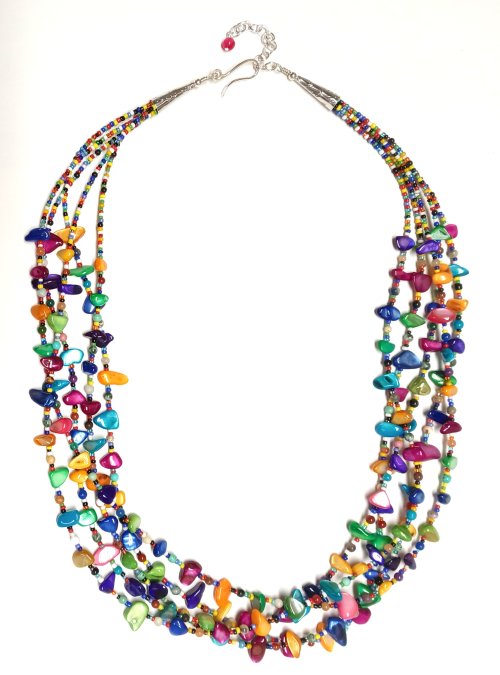 Summer Fun Necklace
Summer Fun Necklace
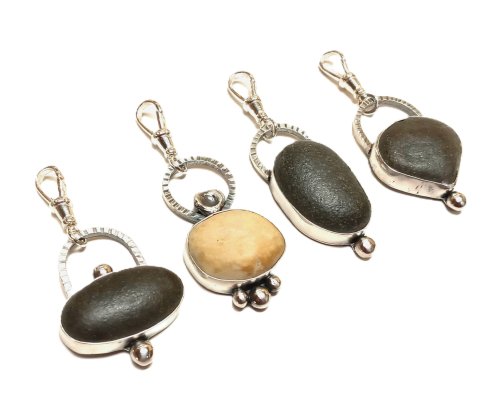 Reunion Key Fobs
Reunion Key Fobs
 Gnome Ornaments
Gnome Ornaments
 Happy Holly Days Ornament
Happy Holly Days Ornament

